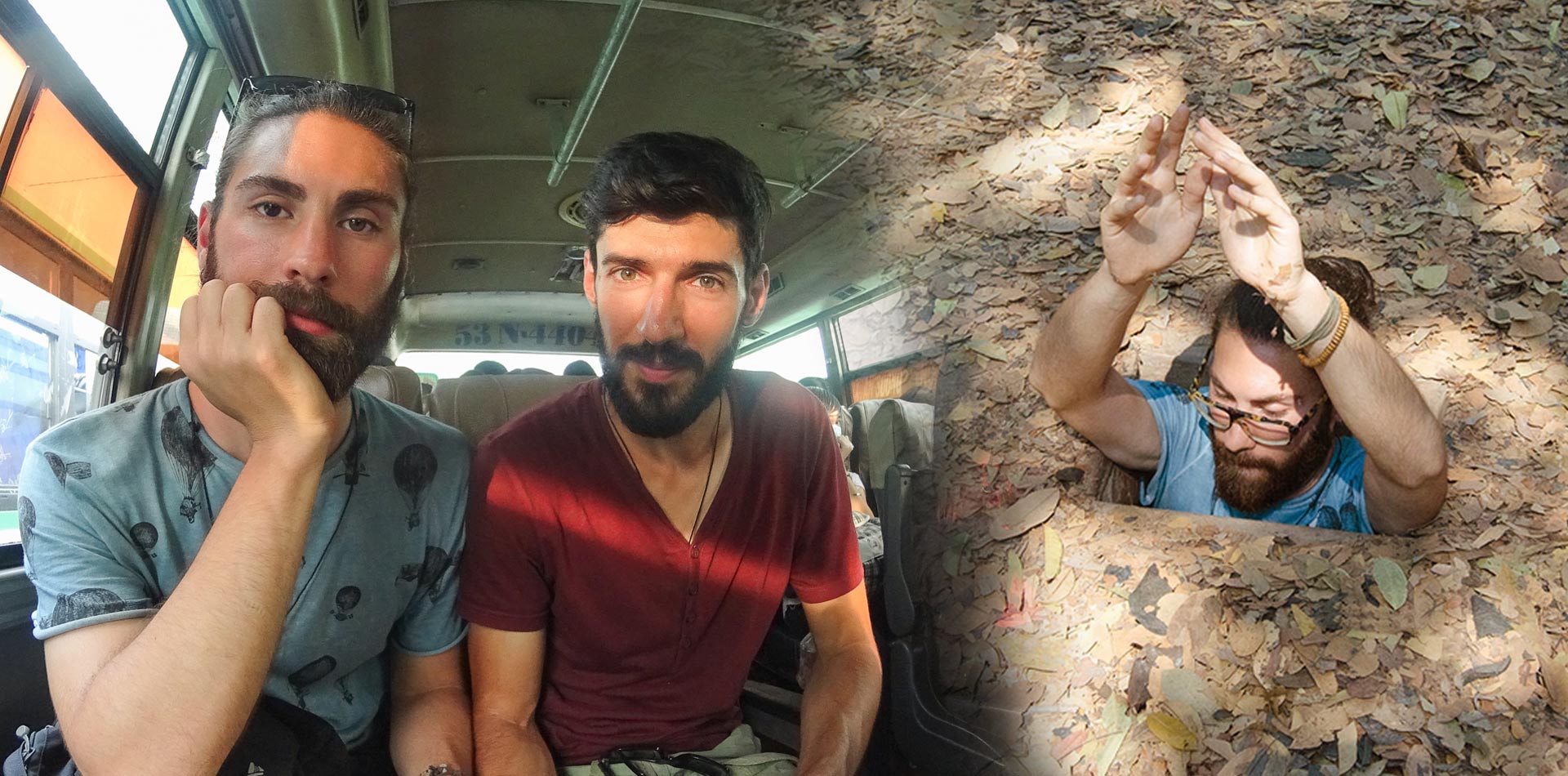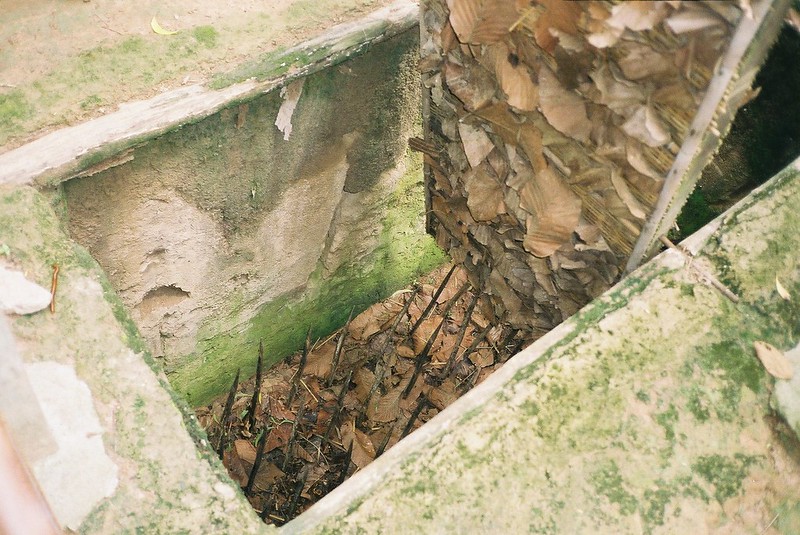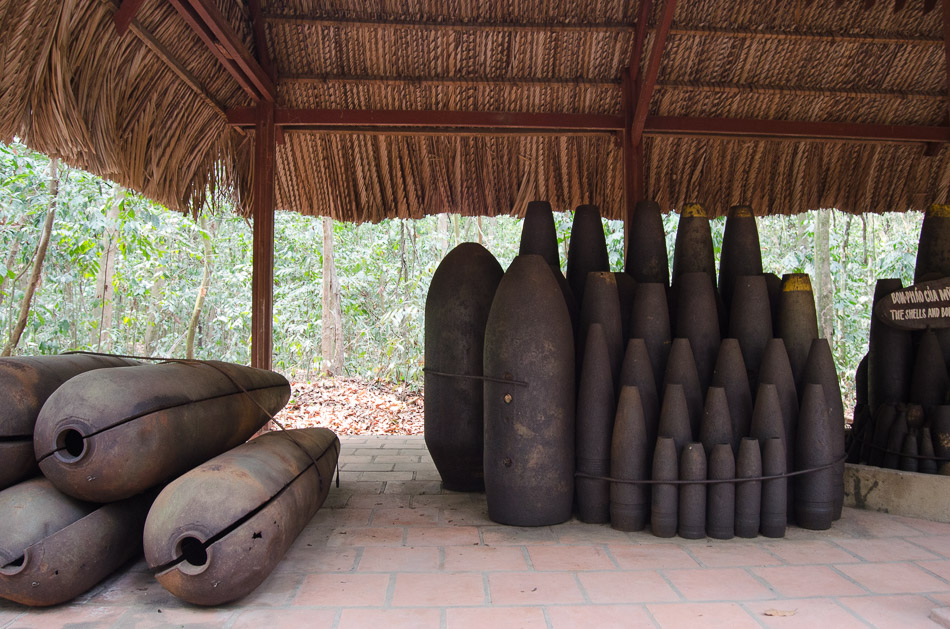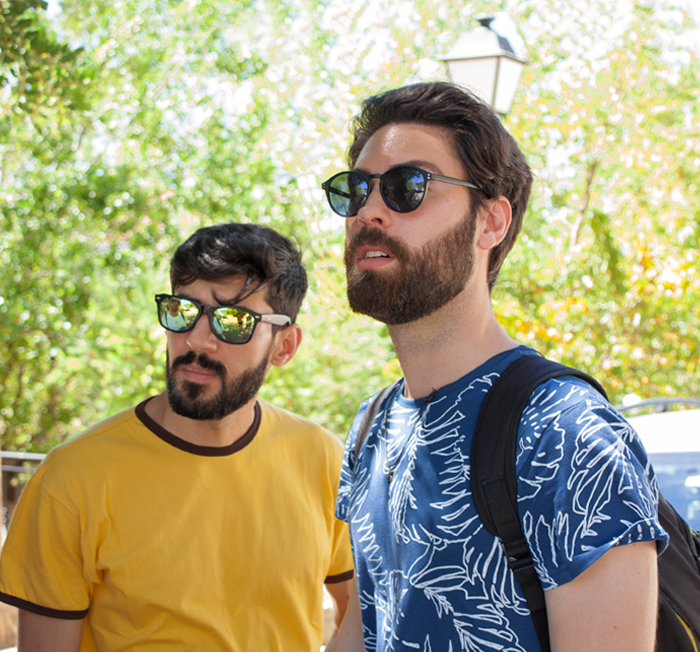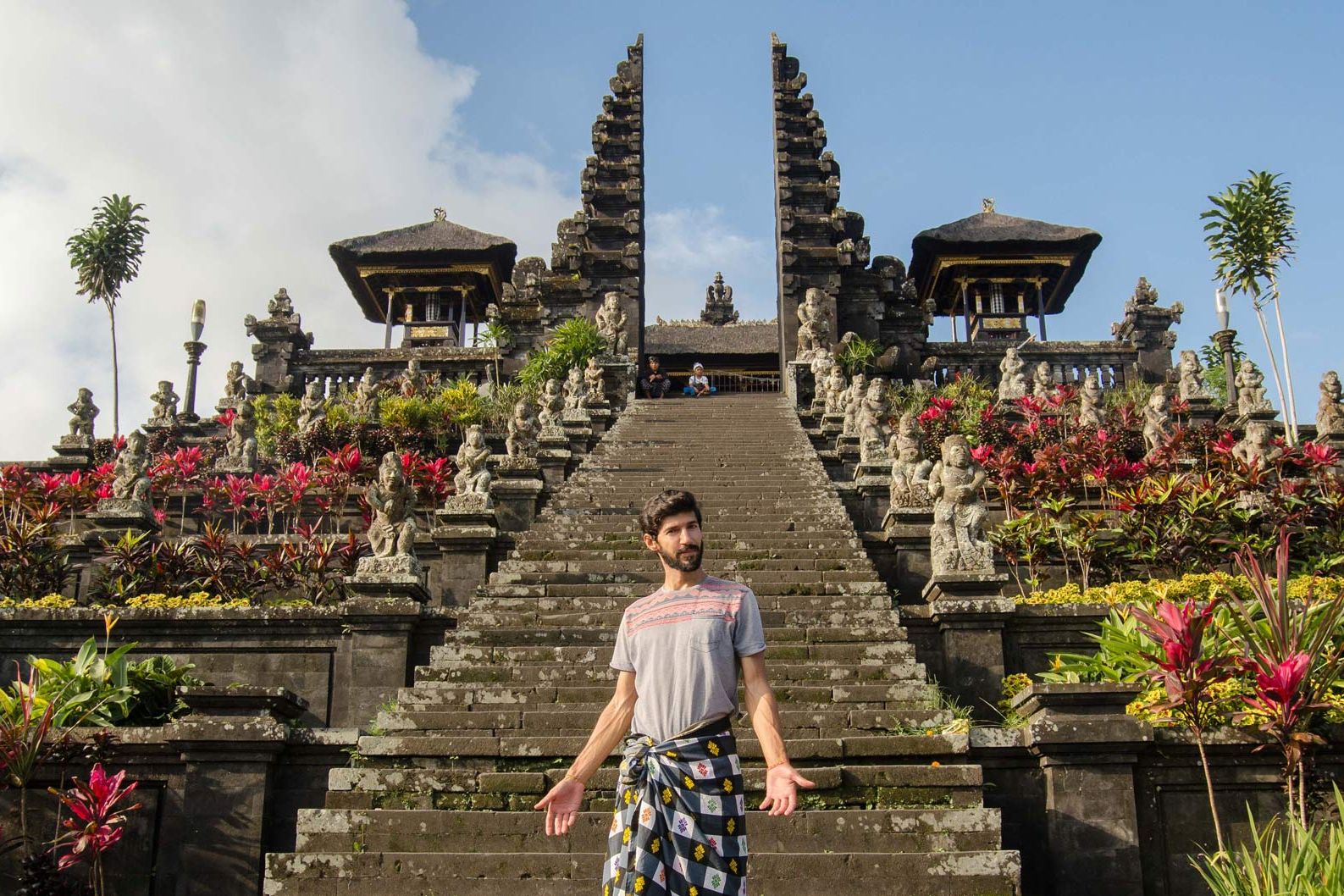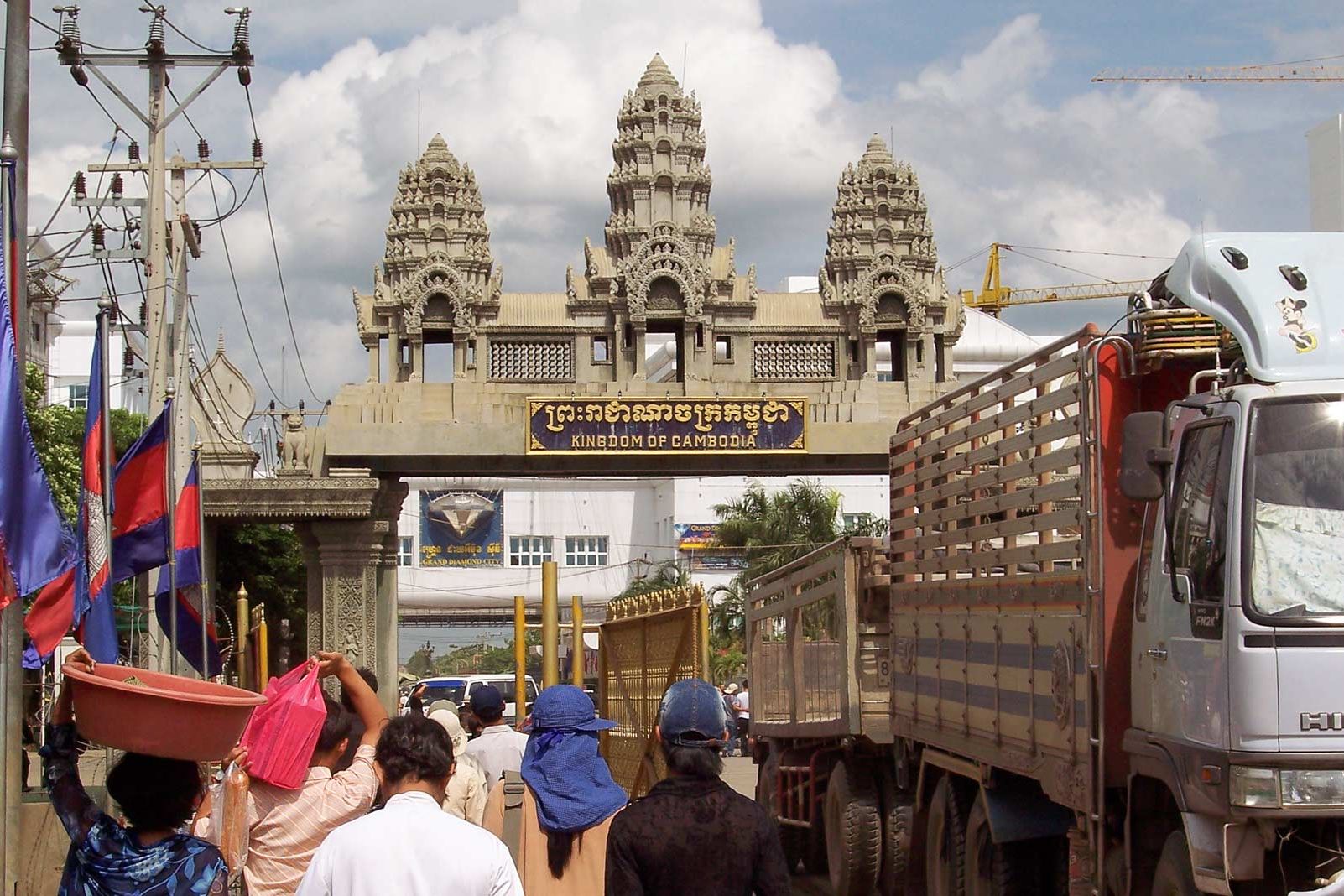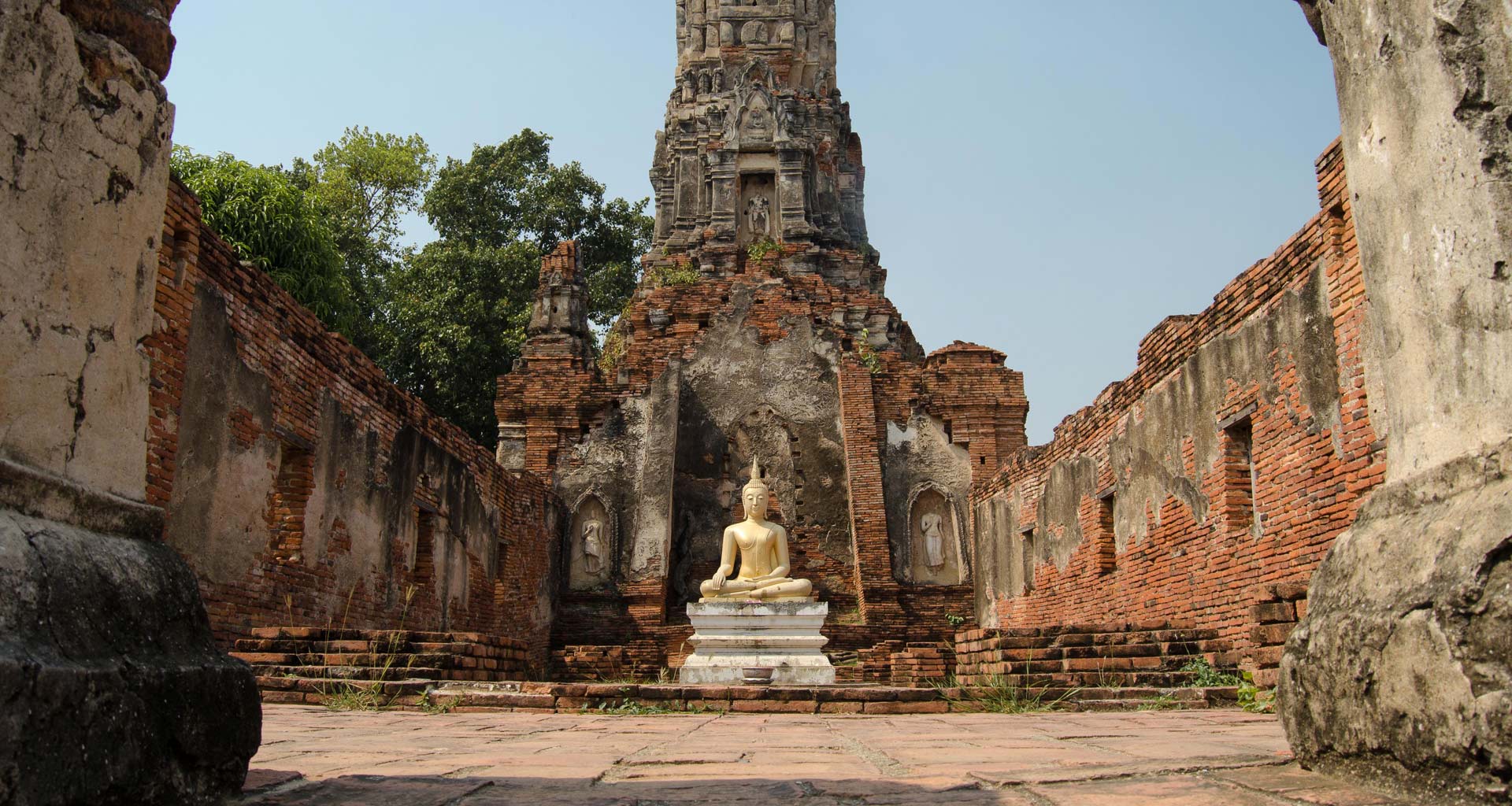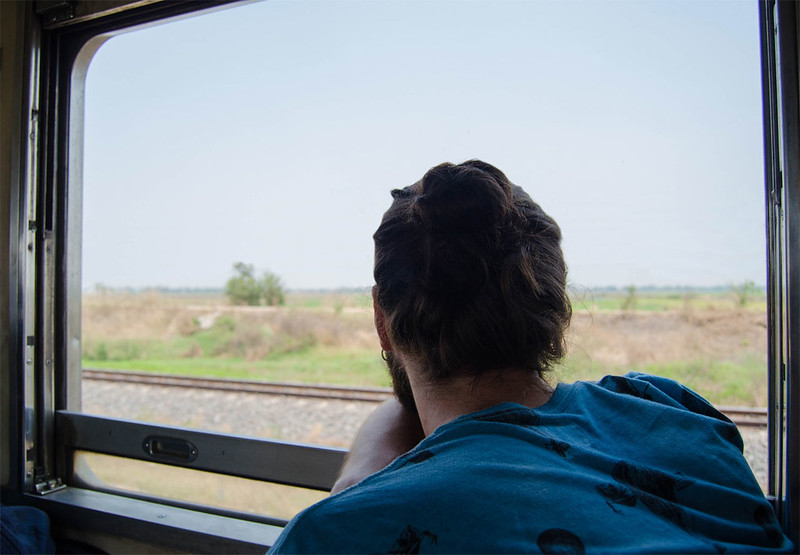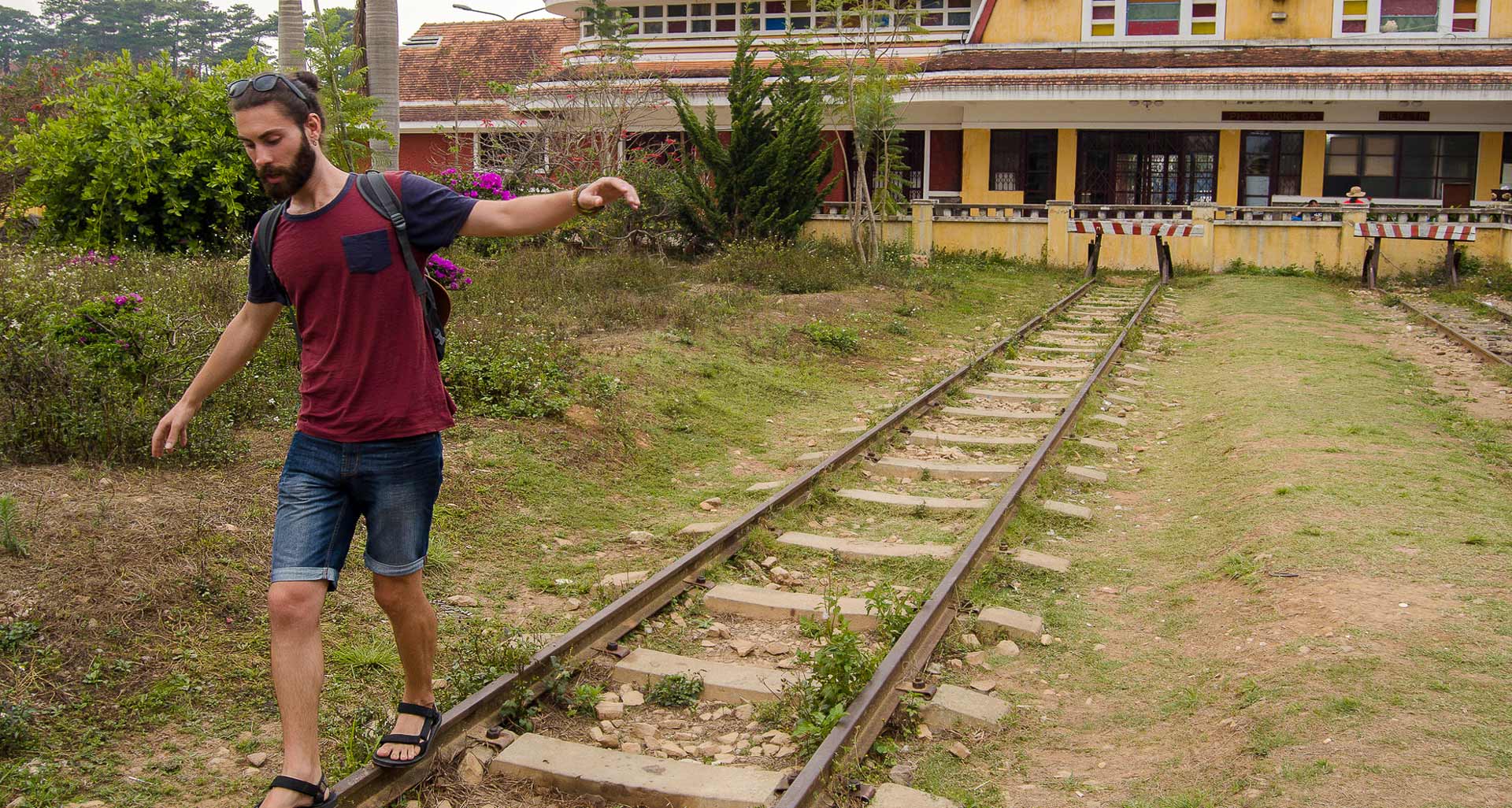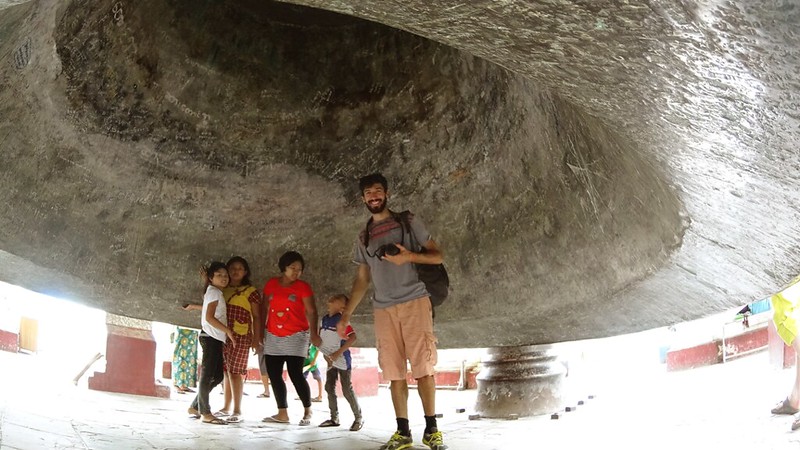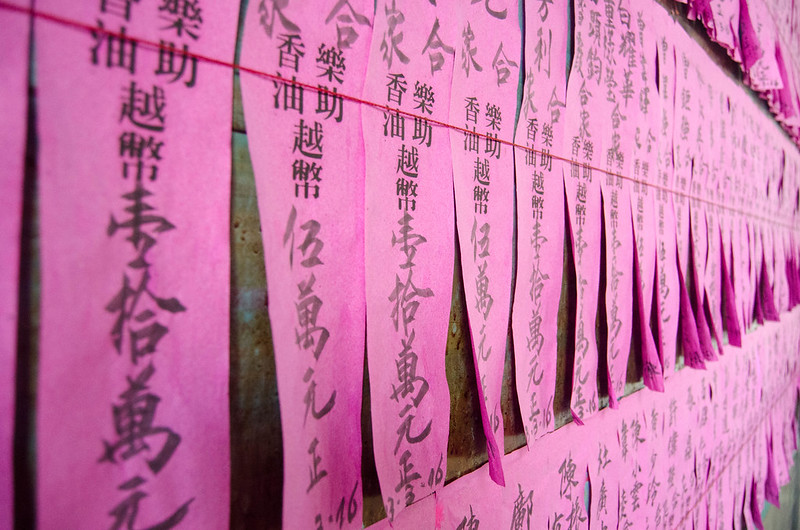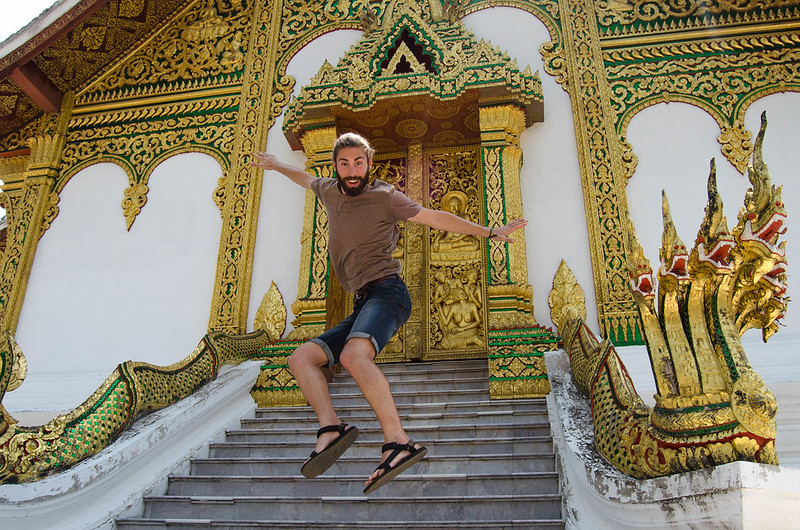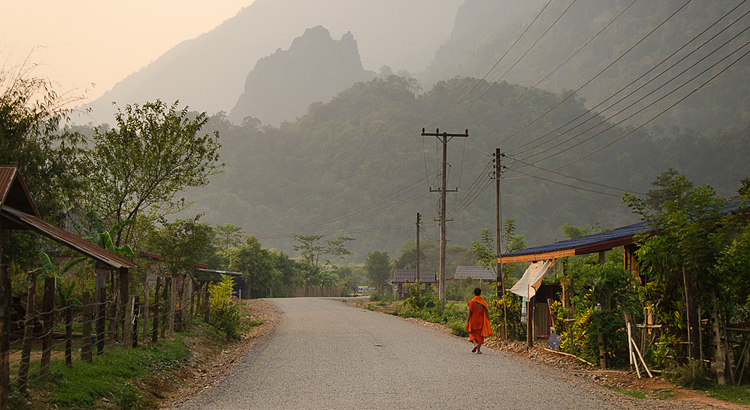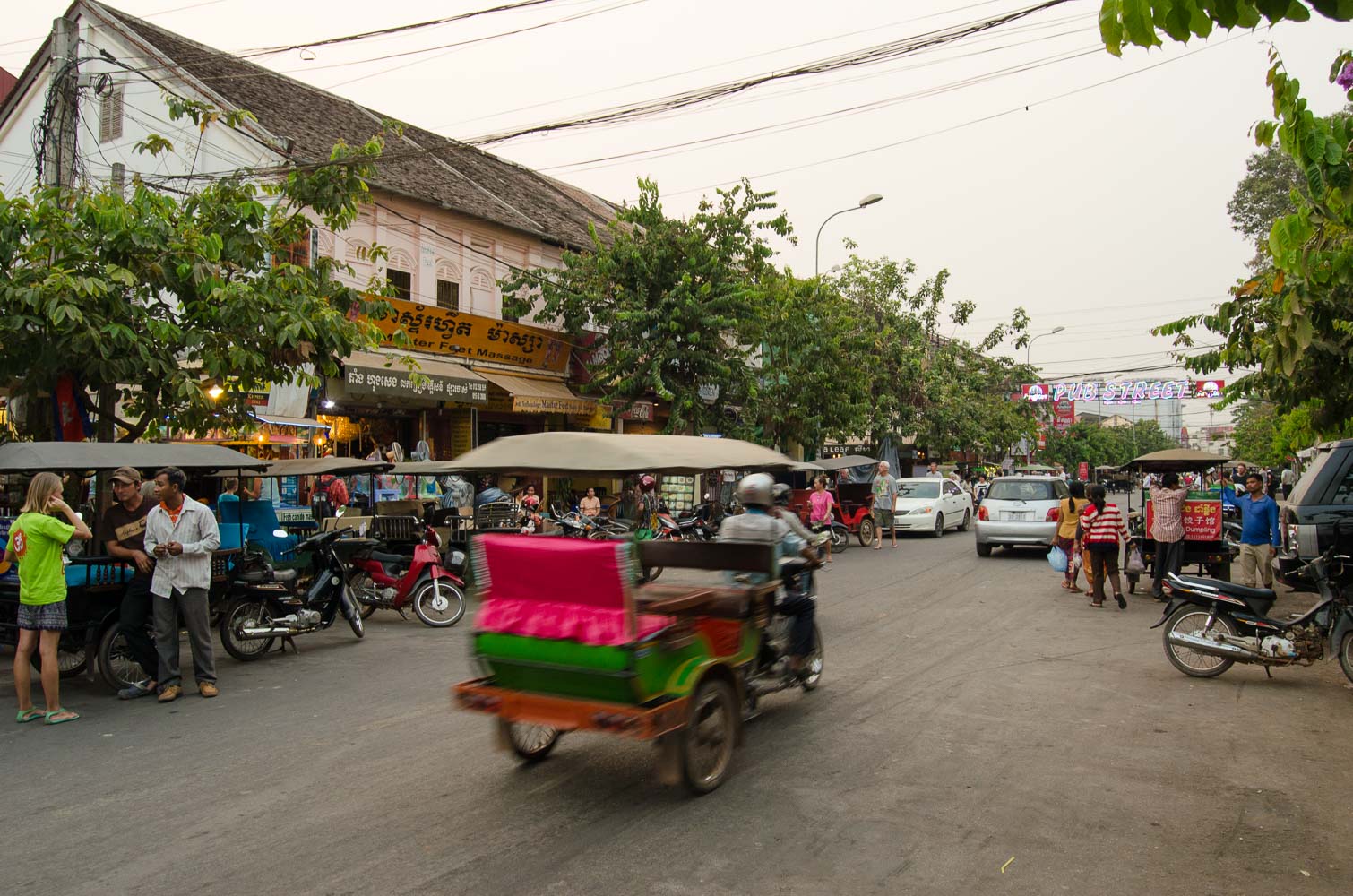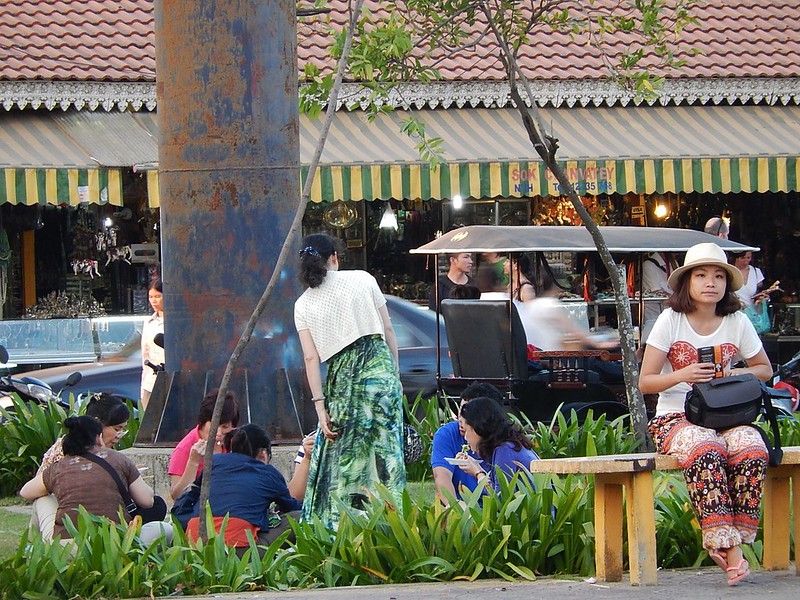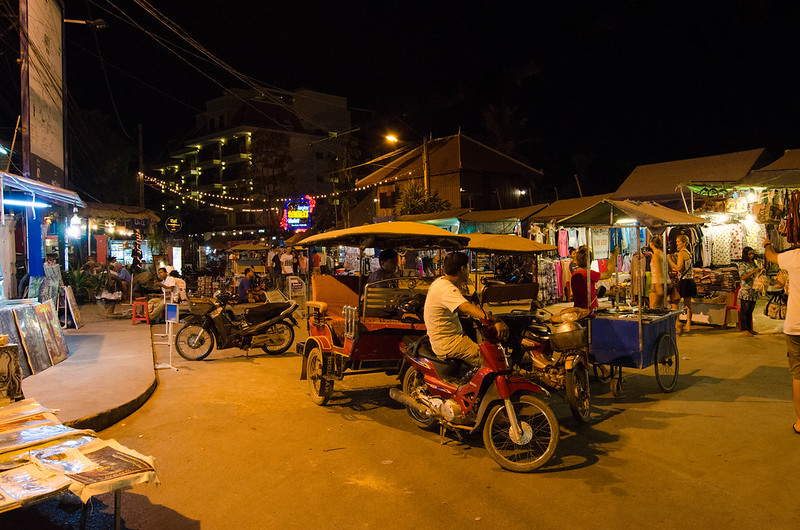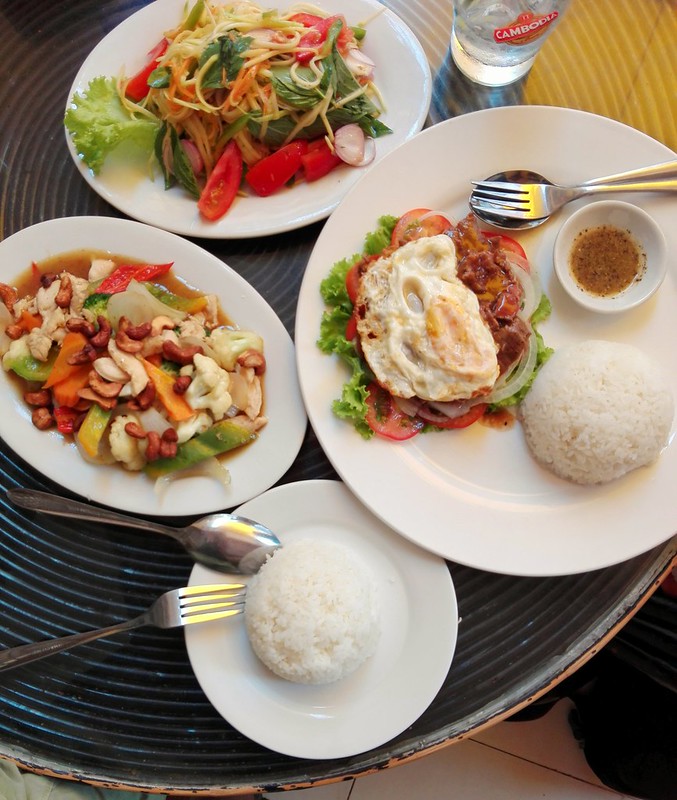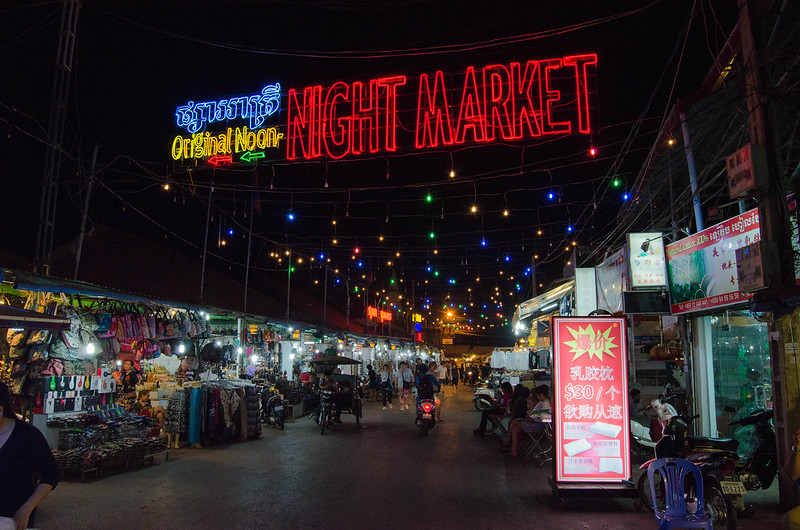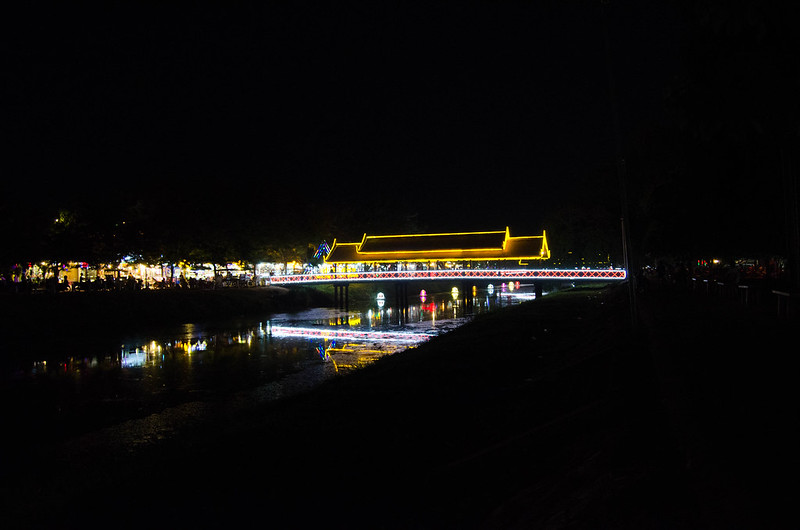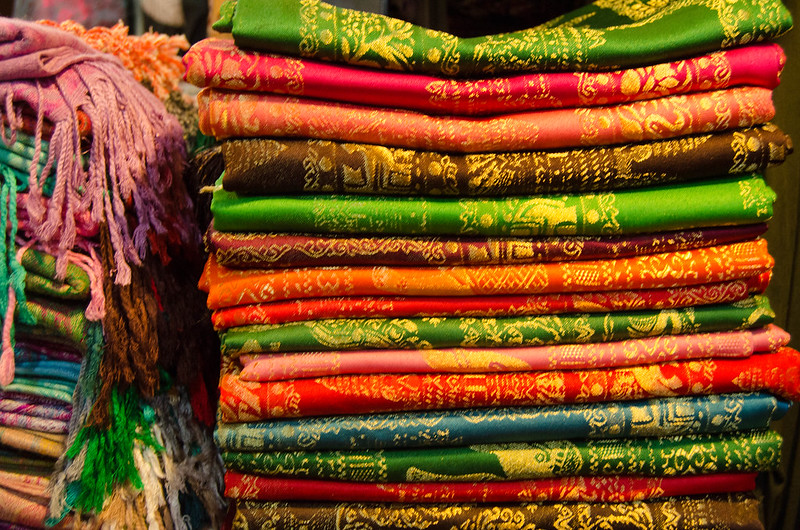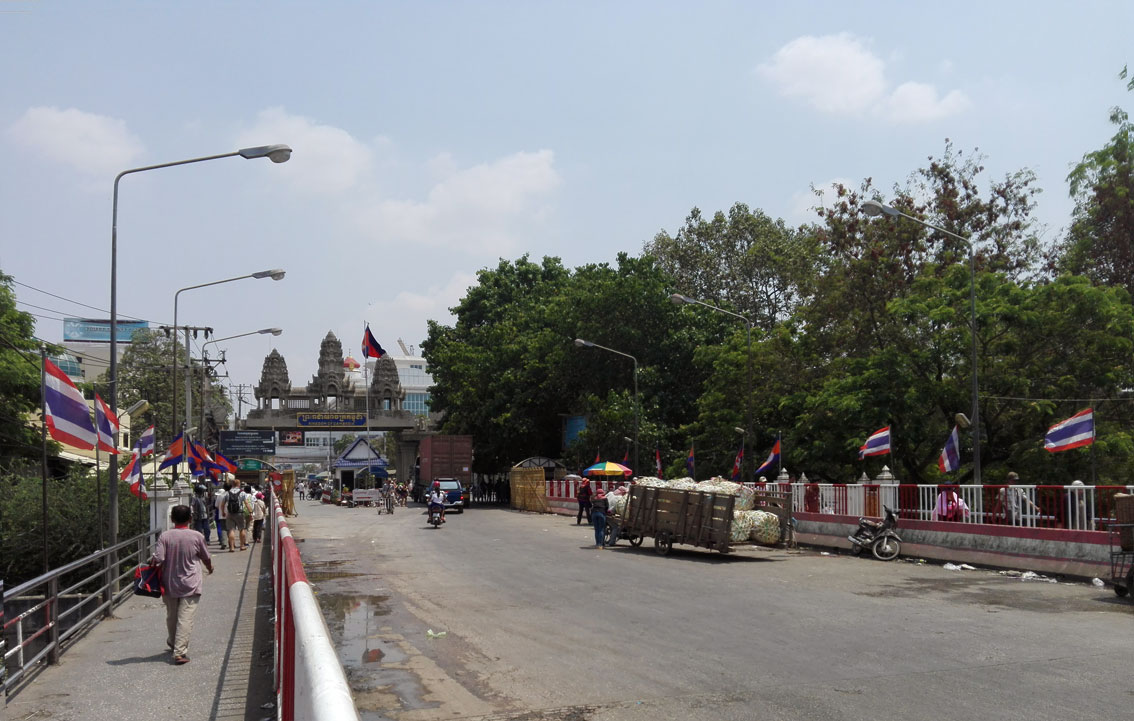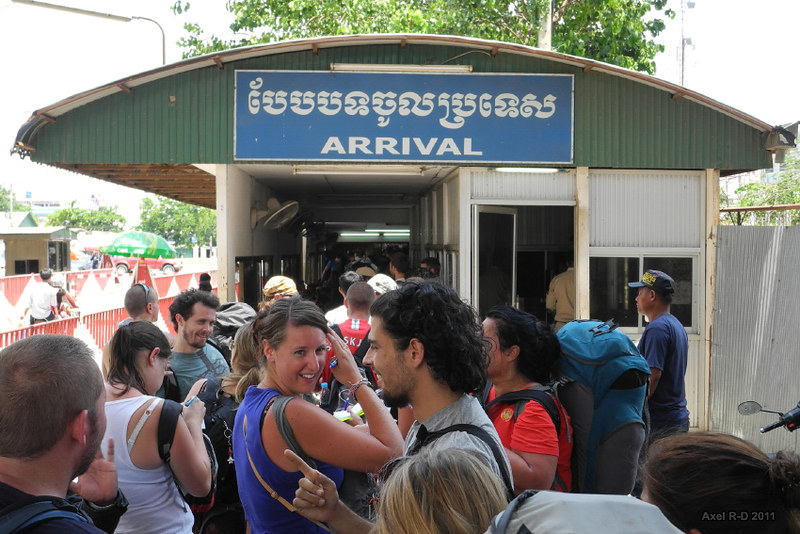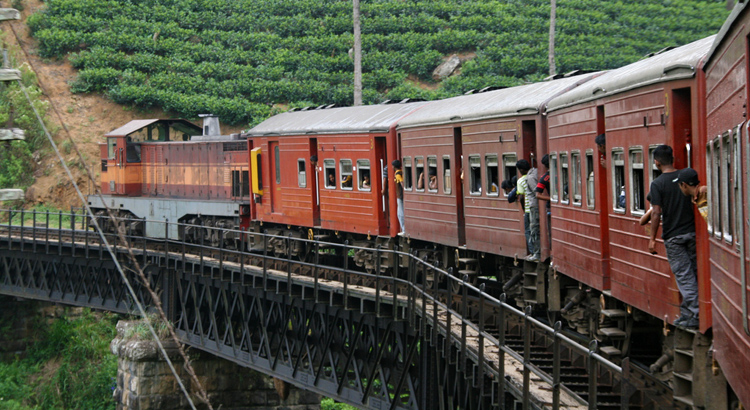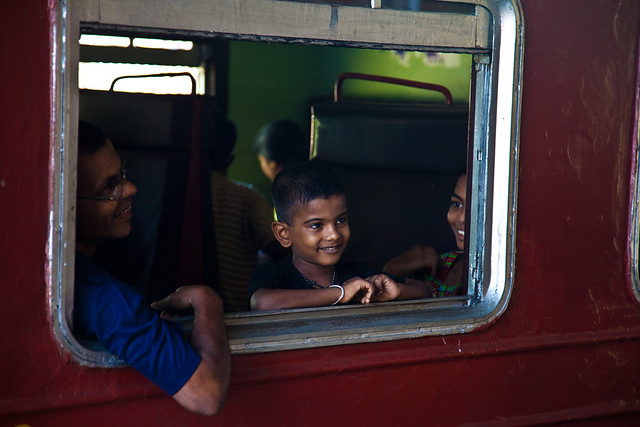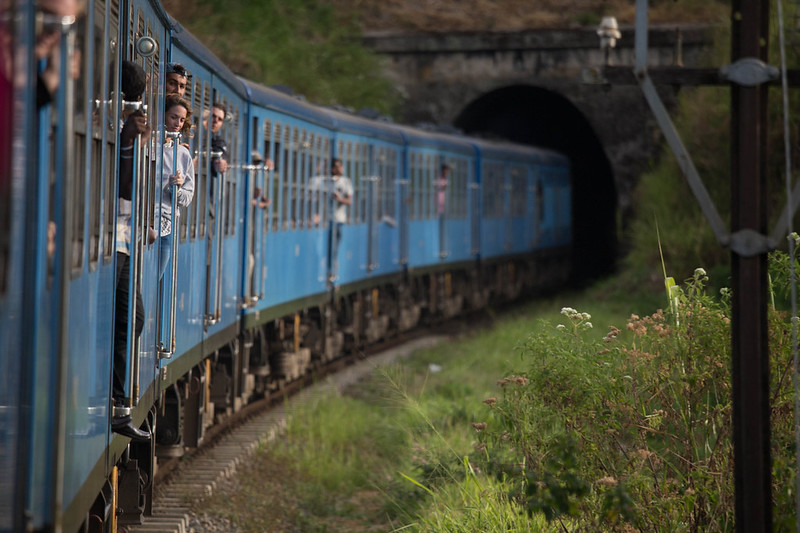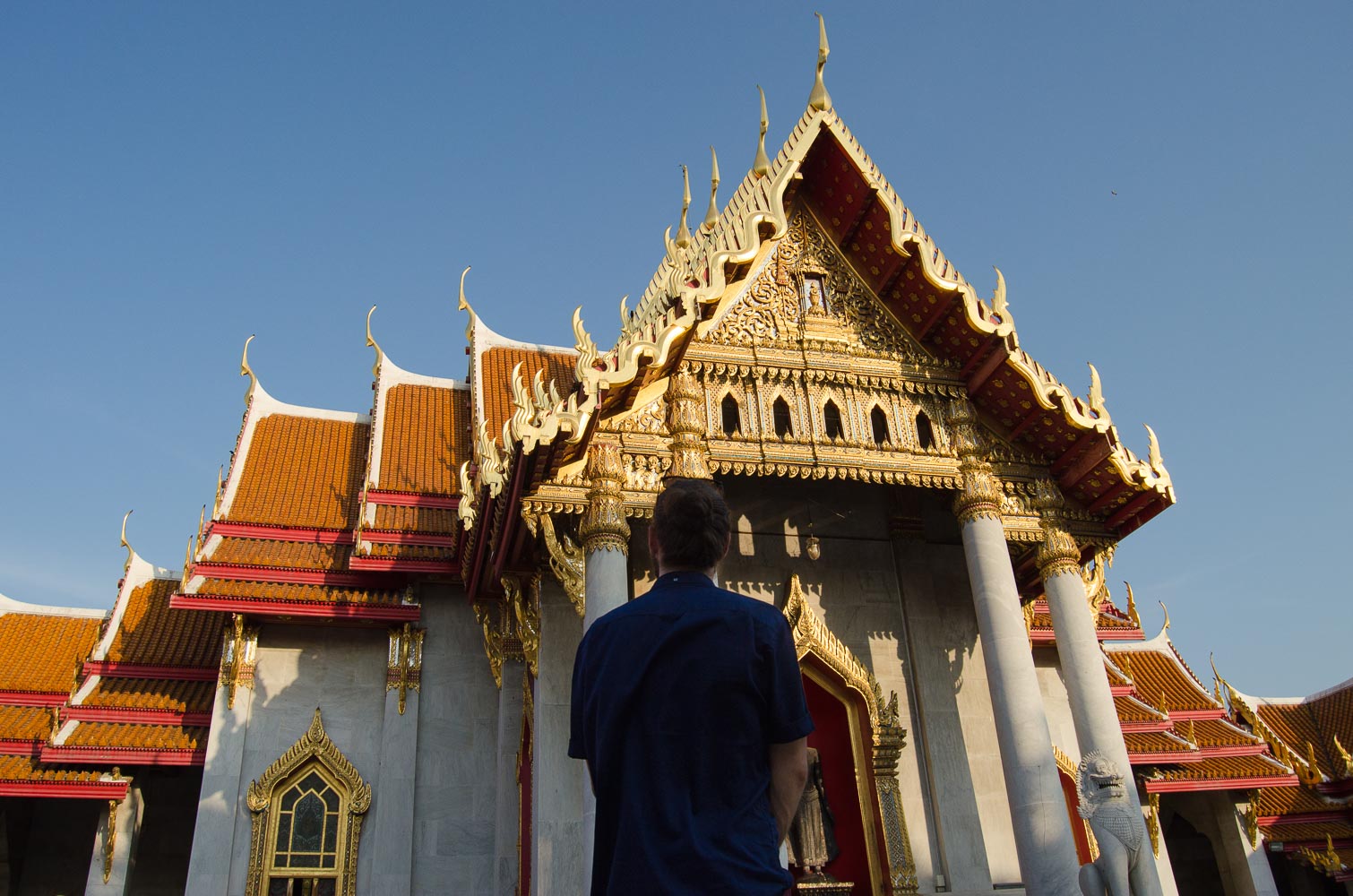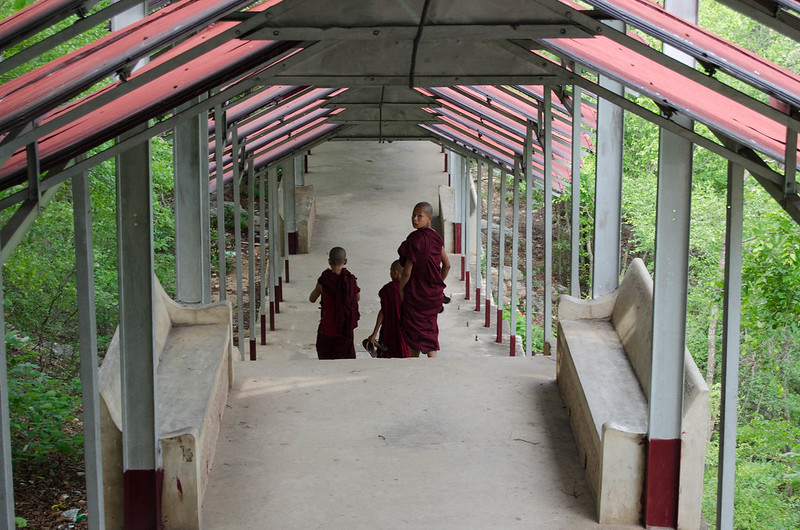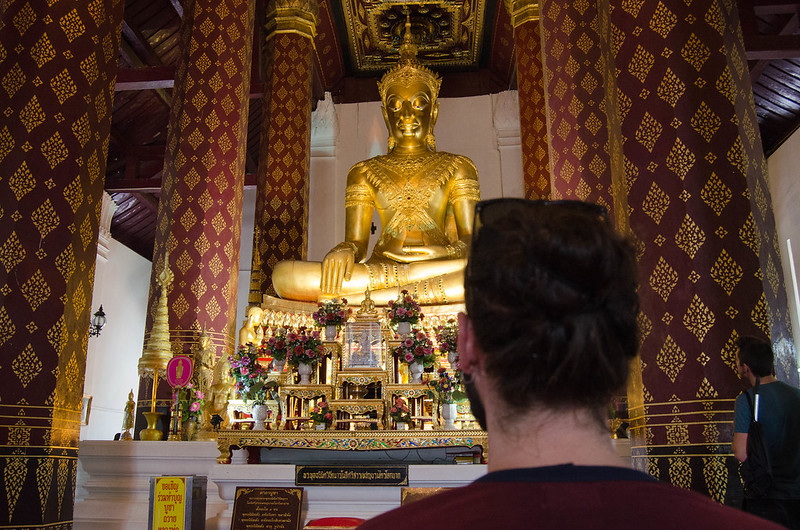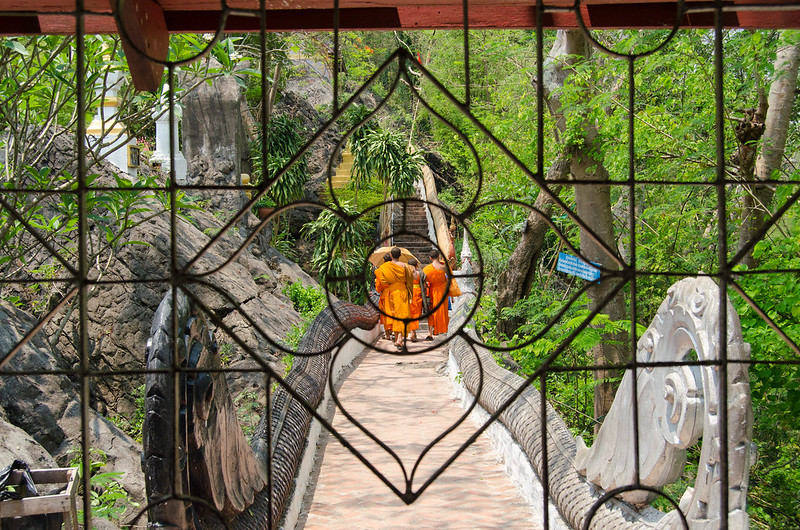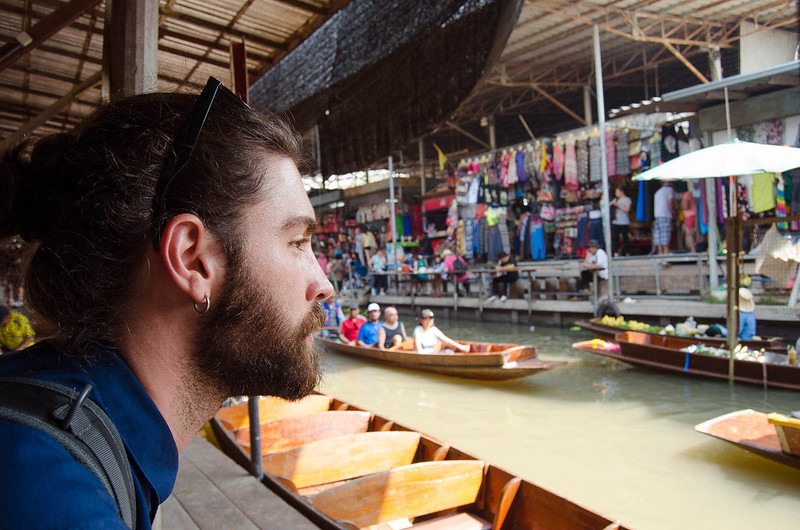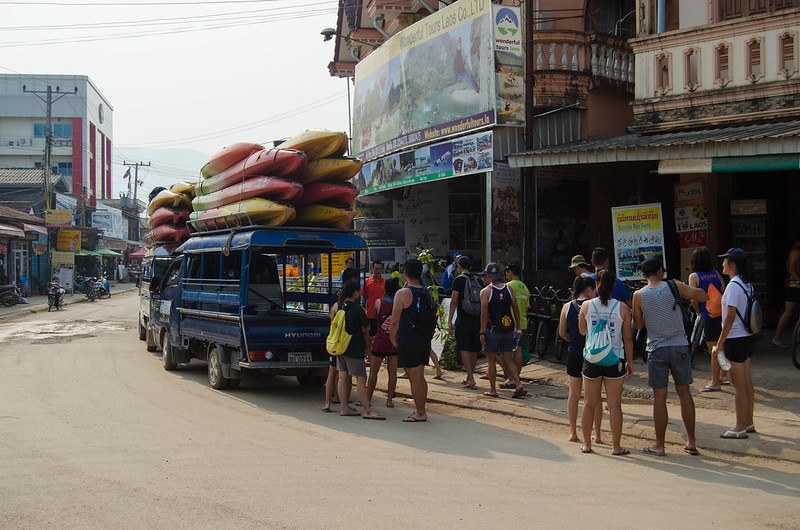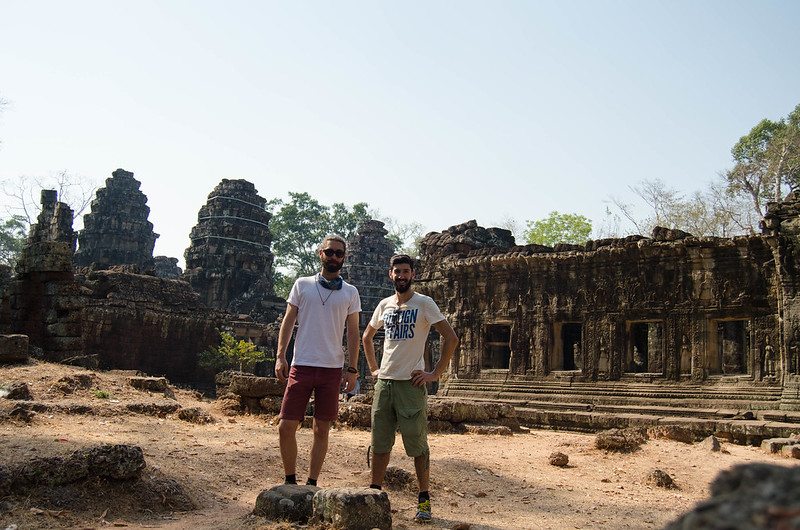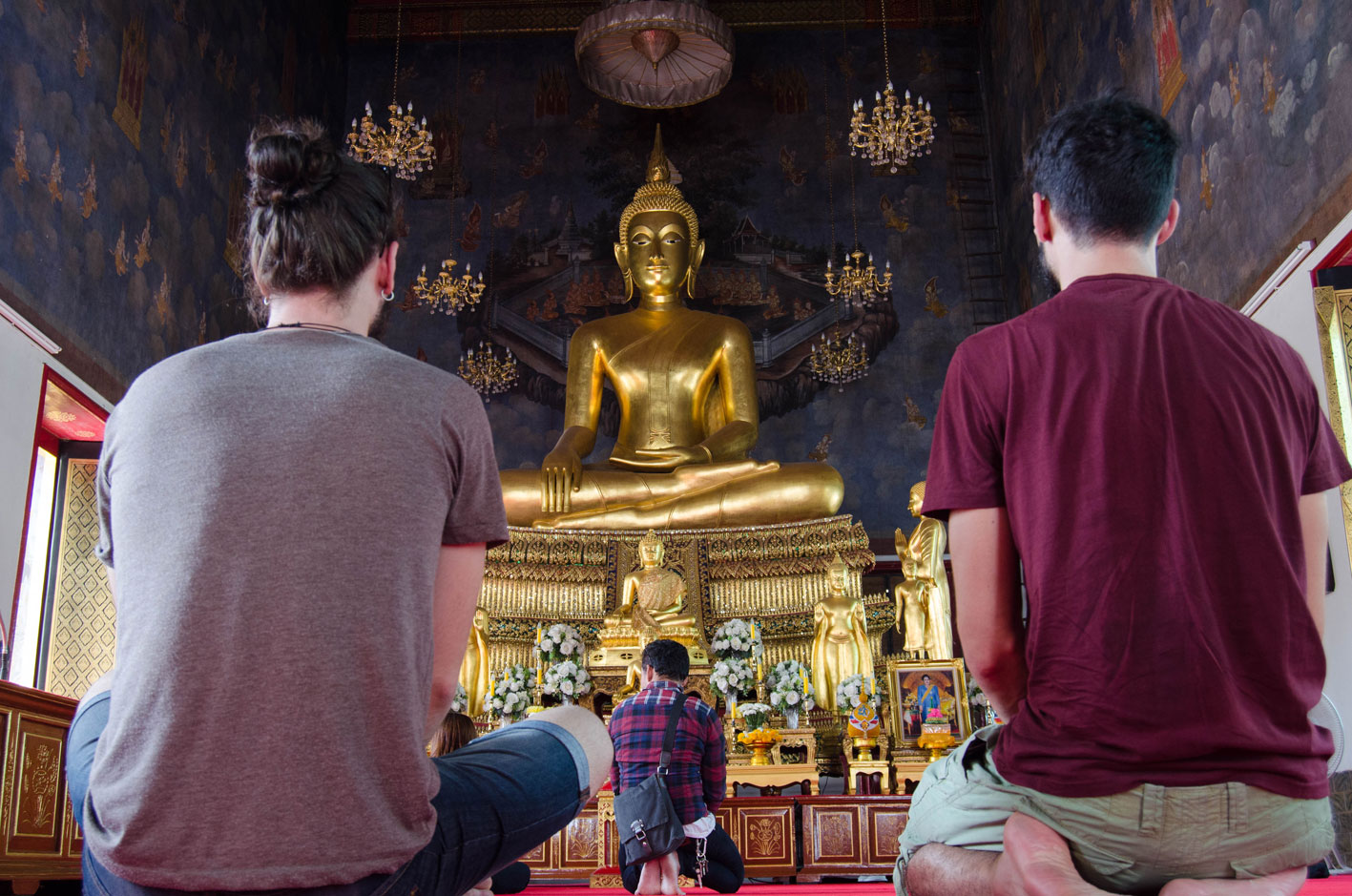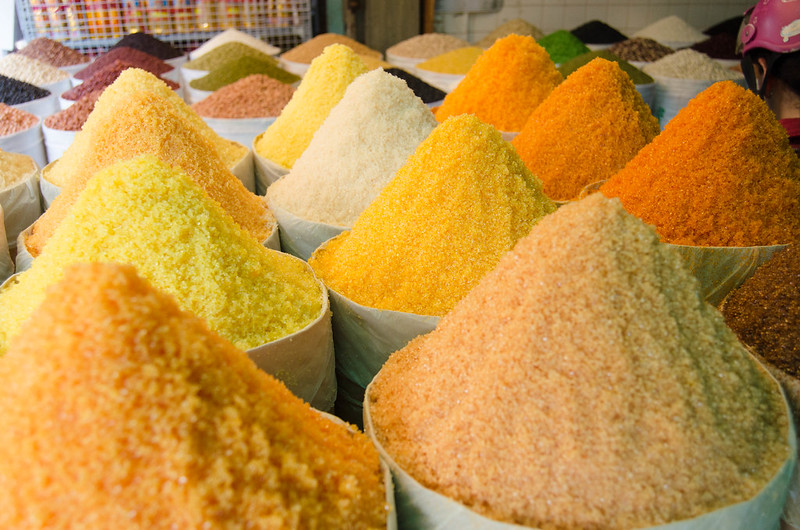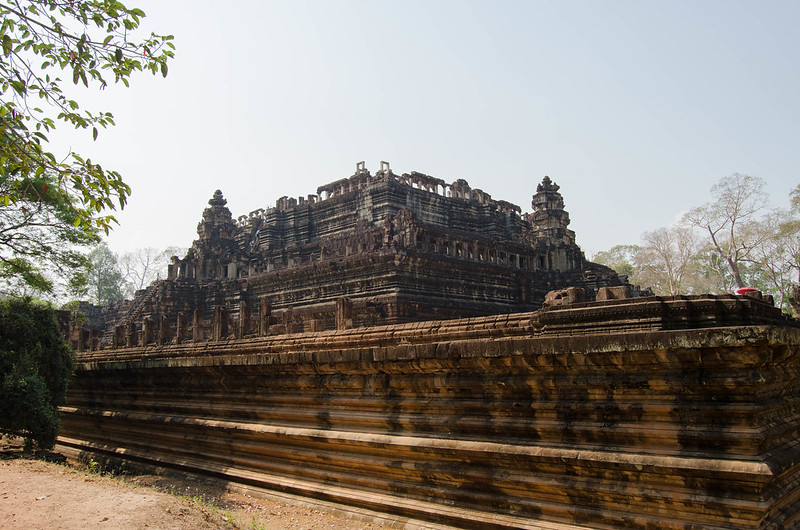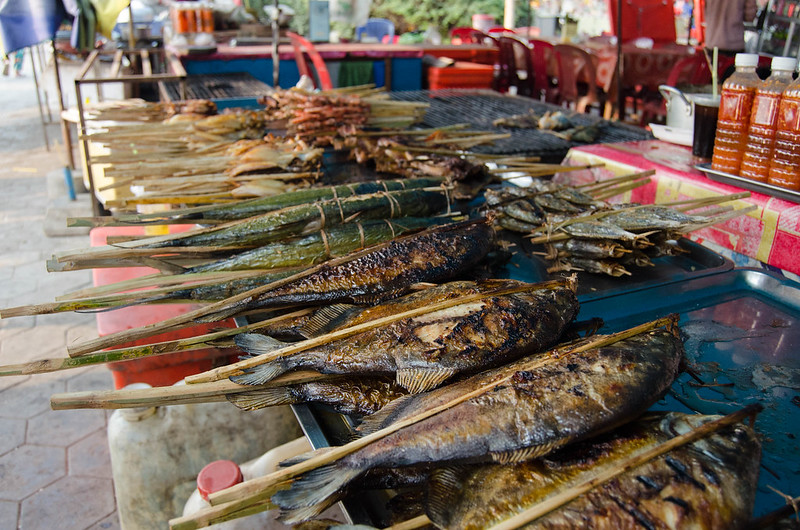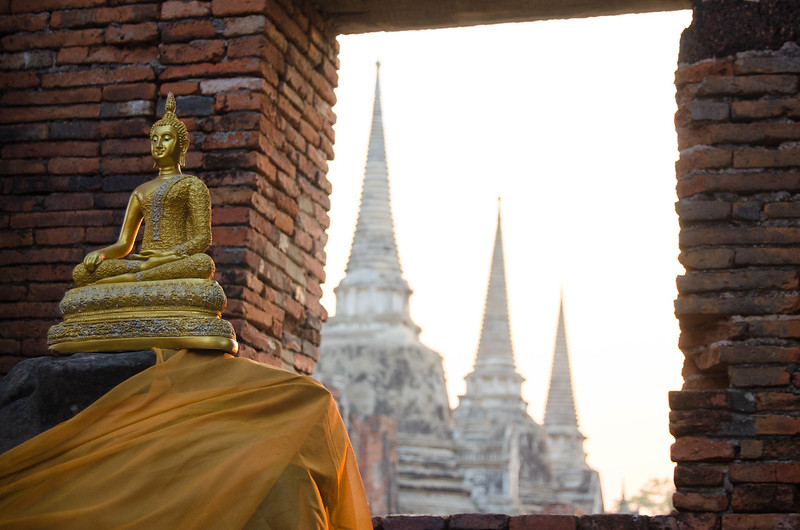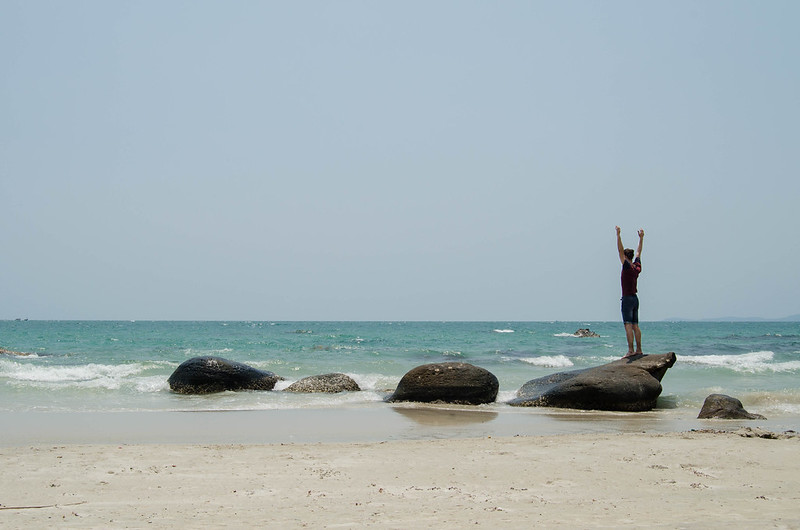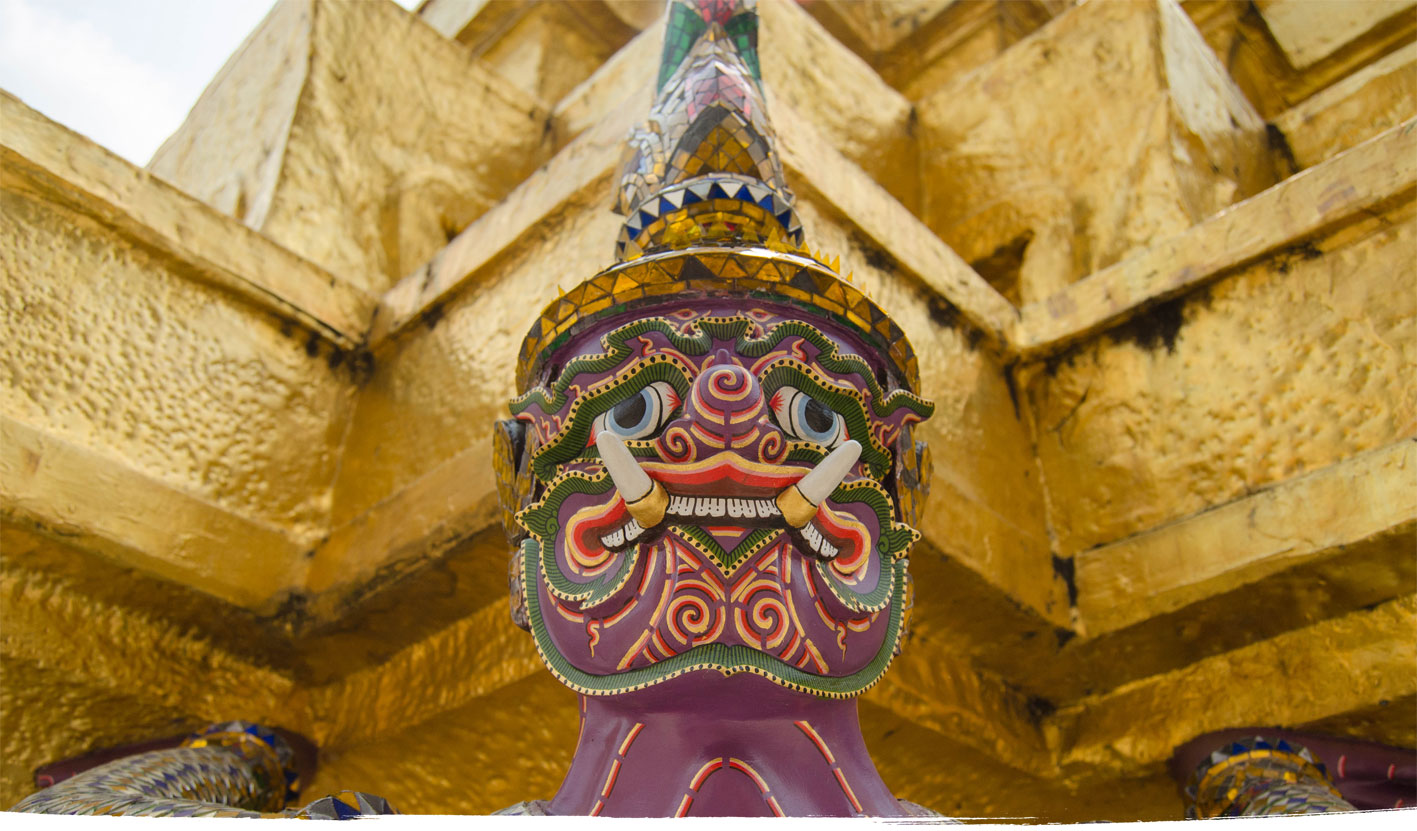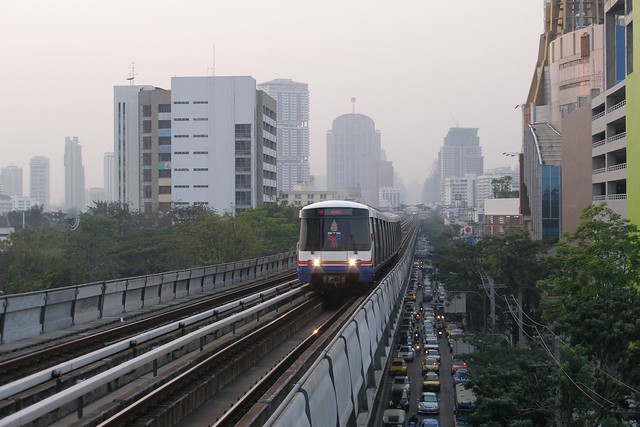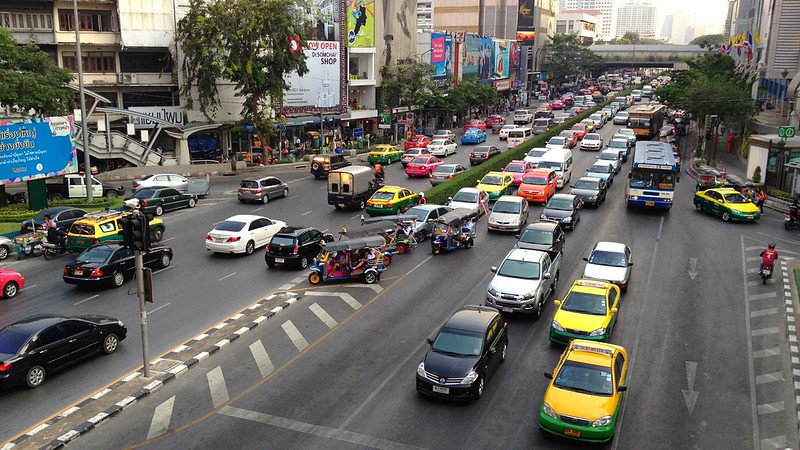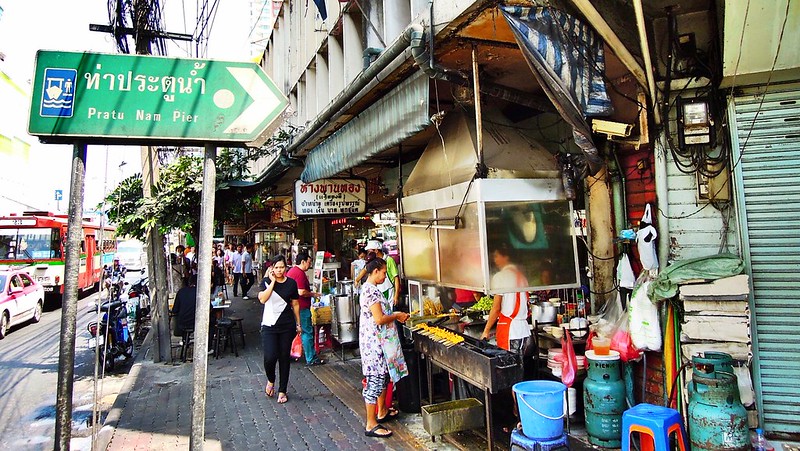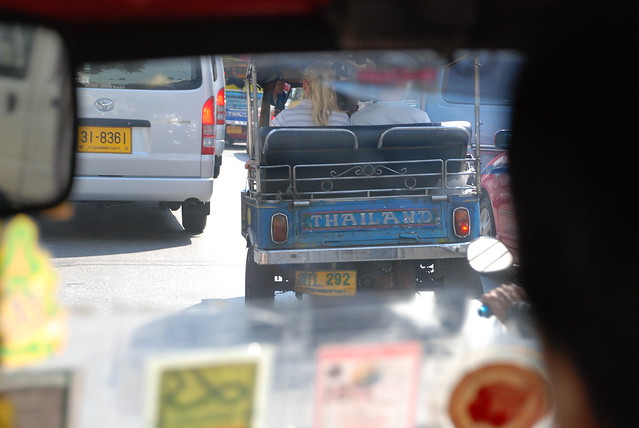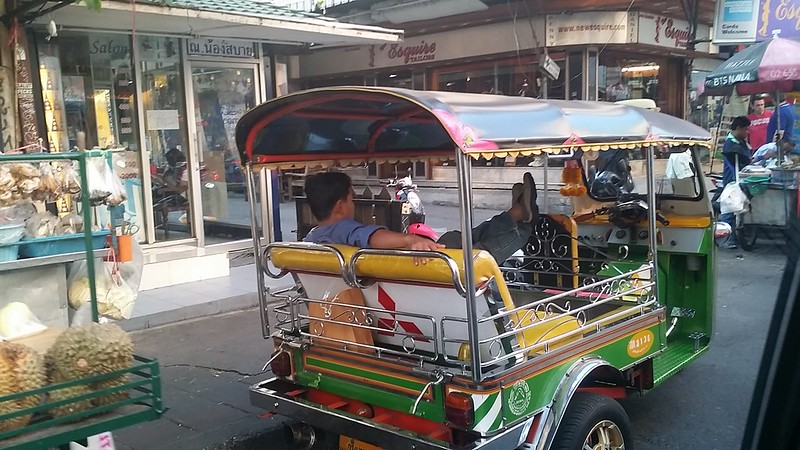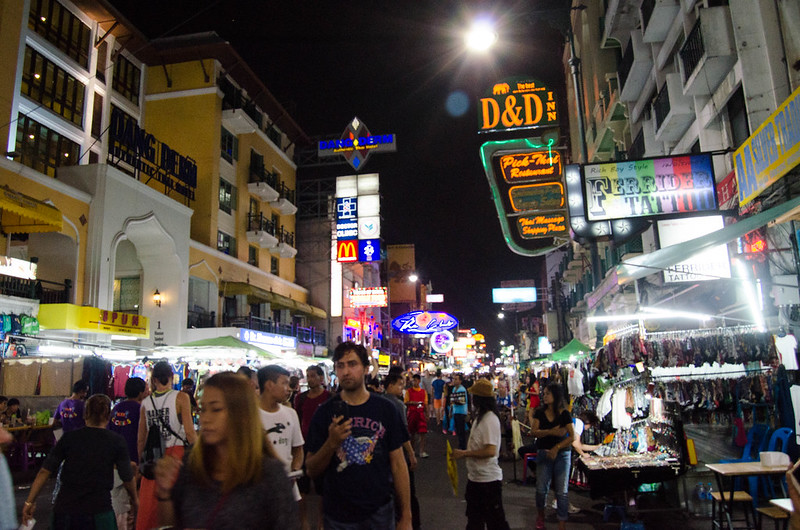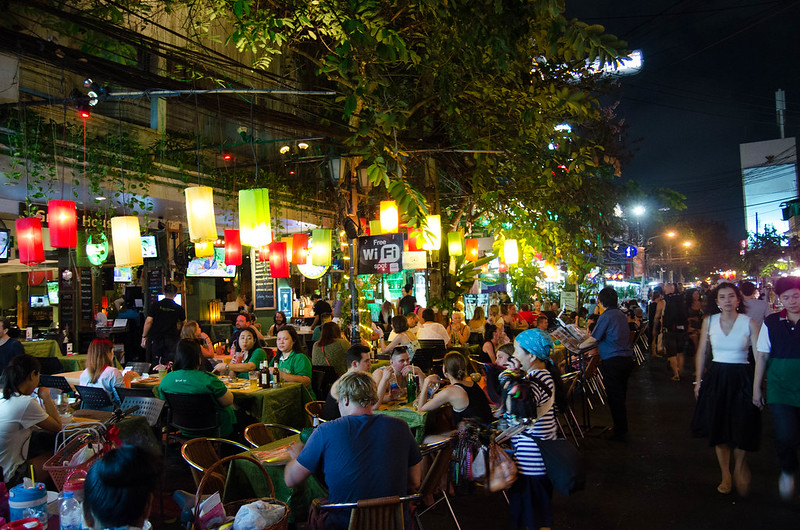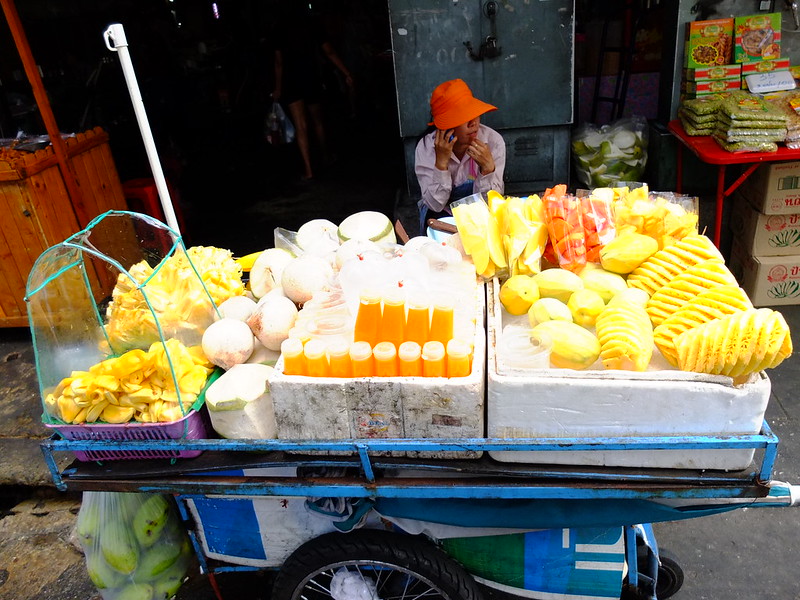Cu Chi Tunnels by Public Bus
Are you planning to visit the Cu Chi Tunnels in Vietnam during your stay in Ho Chi Minh City?
If so, you can do it in 2 ways: paying for a group tour, or spending a fraction of the money buying a bus ticket and doing it on your own. This post is all about the latest.
Which Cu Chi Tunnels to Visit (Ben Duoc vs Ben Dinh)
Most guided tours around Ho Chi Minh City drive tourists to Ben Dinh. The Ben Dinh tunnels are the ones that were reconstructed and widened by the Vietnamese government so tourists could fit in there.
On the other hand, the tunnels in Ben Duoc are a part of the authentic Cu Chi network of tunnels used during the war, and only a few of the tunnels were widened for tourism. Plus, you can get there fairly quickly by public bus, so you should visit the ones in Ben Duoc.
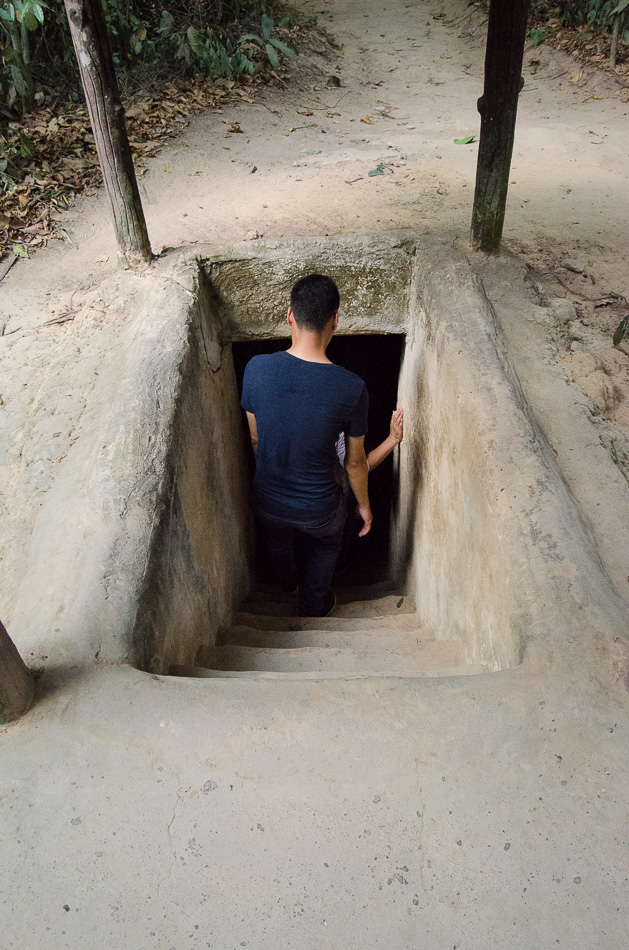
Public Bus to the Cu Chi Tunnels
The bus trip from Ho Chi Minh City to the Ben Duoc Cu Chi Tunnels will take around 2h20.
Go to the Ho Chi Minh Bus Station at the western end of Backpacker Street (Pham Ngu Lao) in District 1. Hop on Bus Nº13 to Cu Chi Station (buses leave every 30 minutes, more or less).
The tickets are purchased inside the bus and cost 20.000 VND / €0.78 / $0.84 USD per person. This is the first part of the trip and it’ll take 1h30.
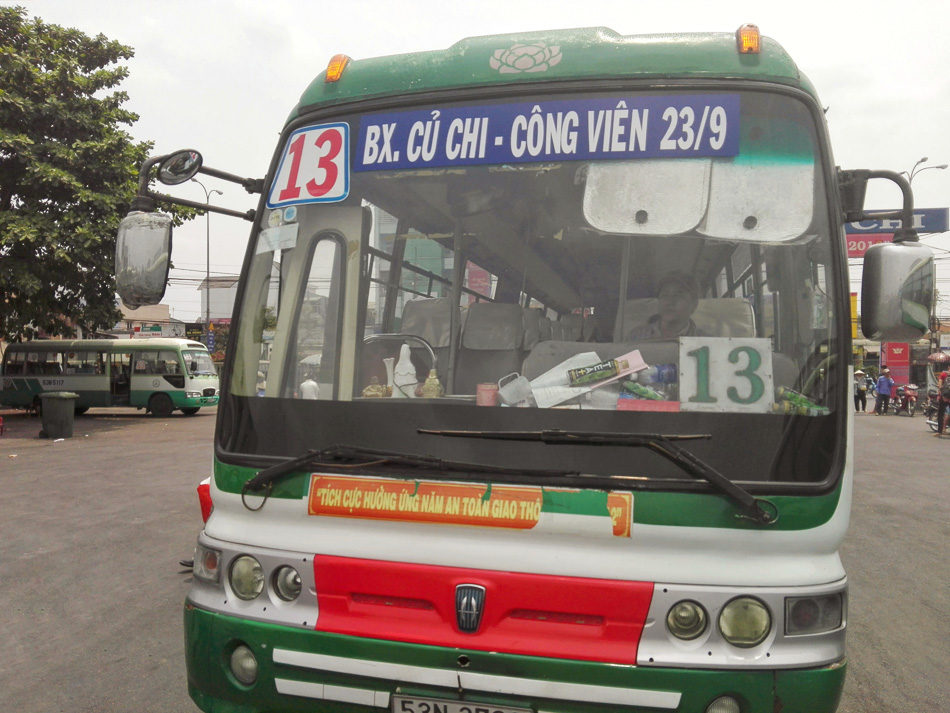
When you reach the Cu Chi Station — and if you want to keep saving money — you’ll have to swerve around the horde of taxi drivers offering their services to the tourists that got off the bus. They’ll say there are no more buses onwards and taking a taxi is the only alternative. That’s not true.
Smile, and look around for Bus Nº79.
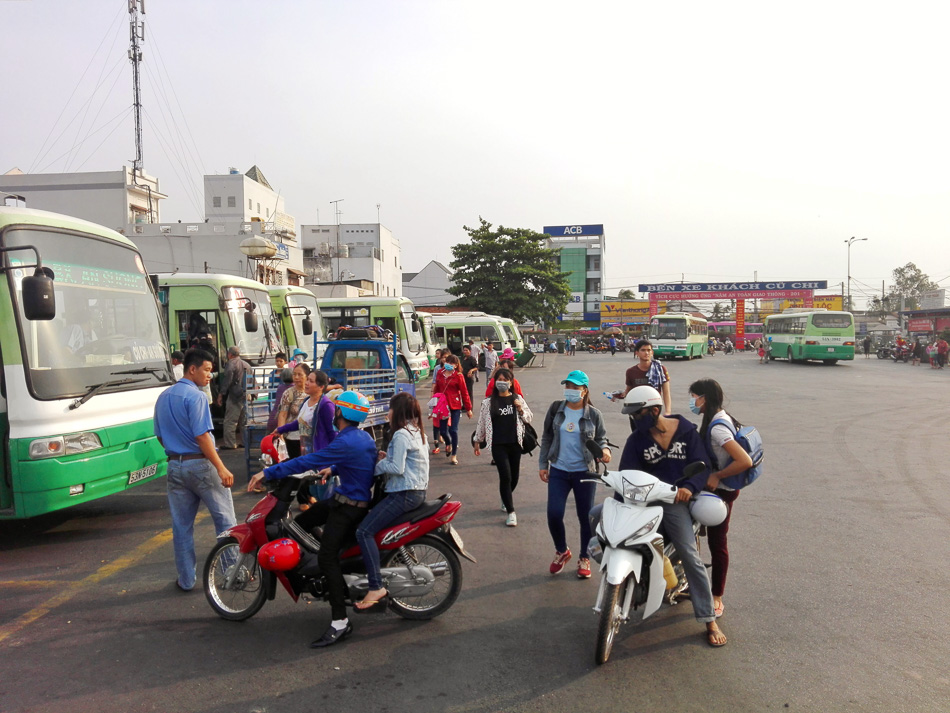
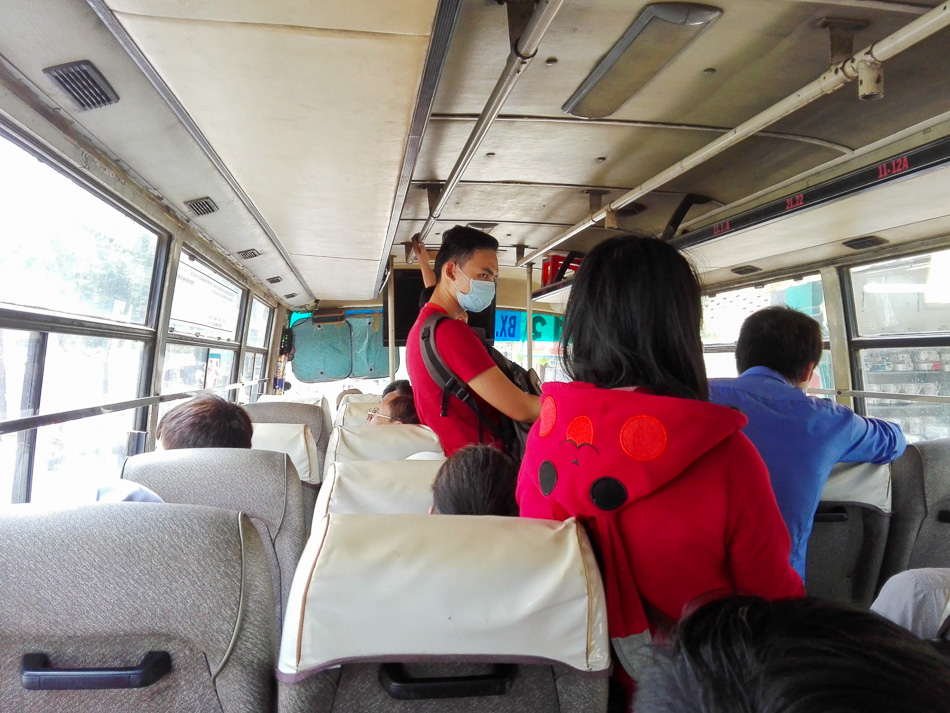
Hop on Bus Nº79 and buy the ticket to Ben Duoc from the ticket agent. This ticket will be a further 7.000 VND / €0.27 / $0.30 USD and the trip will take around 40 minutes. We asked the ticket agent to let us know where we needed to get off and he did.
Nonetheless, after 40 minutes you’ll reach an intersection with two blue traffic signs pointing to Ben Duoc (left) and Ben Dinh (right). The bus will turn left and ten minutes later (around 3kms) you’ll have to hop off. Here’s the spot:
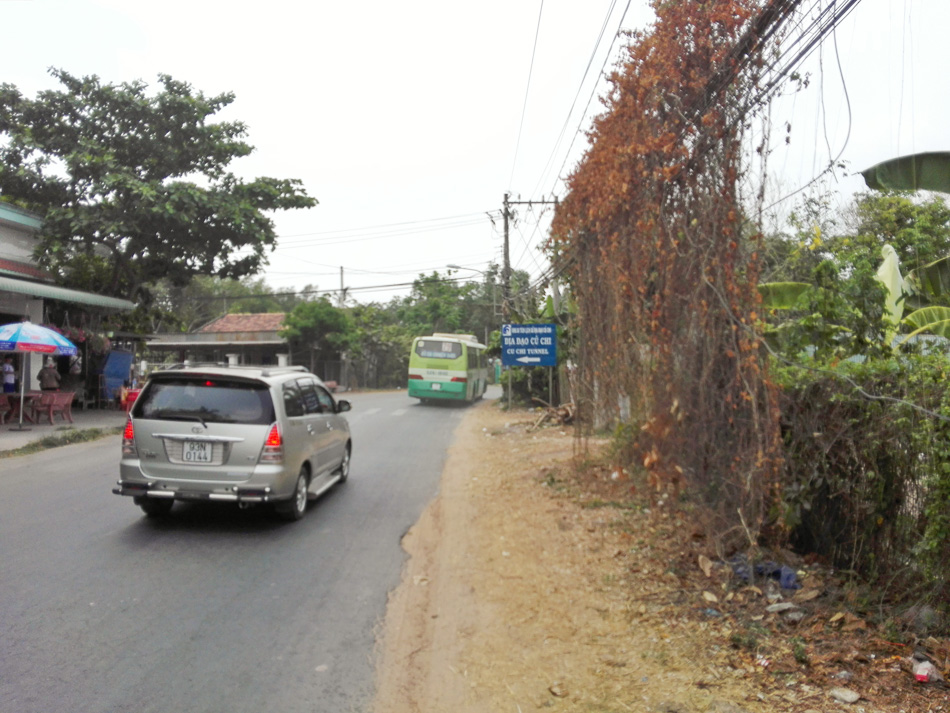
After hopping off, cross the road, walk 0.5 km to the ticket booth, and then another 0.5 km walk to the ticket checking.
If you have any doubts, ask a local! They’re super friendly and know that if you’re on Bus Nº79, you plan to visit the Ben Duoc tunnels. As we mentioned before, only group tours go to Ben Dinh.
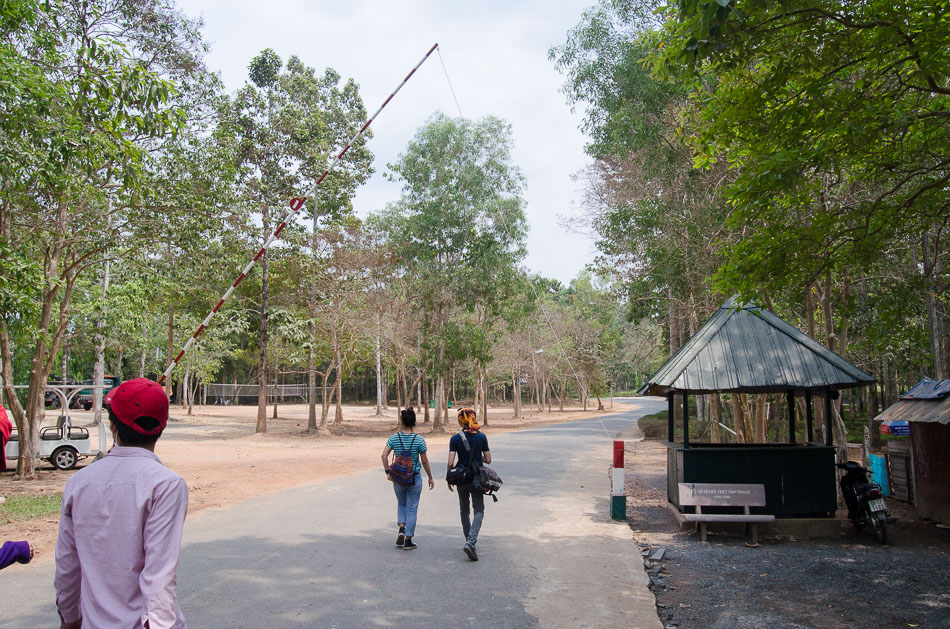
Visiting the Cu Chi Tunnels
Cu Chi tunnels entrance fee: 125.000 VND / €4.95 / 5.30 USD
Tickets will include an English-speaking guide.
After buying the tickets we were directed to a wooden gazebo to watch a short video on the Vietnam War and the key role the tunnels had during war operations.
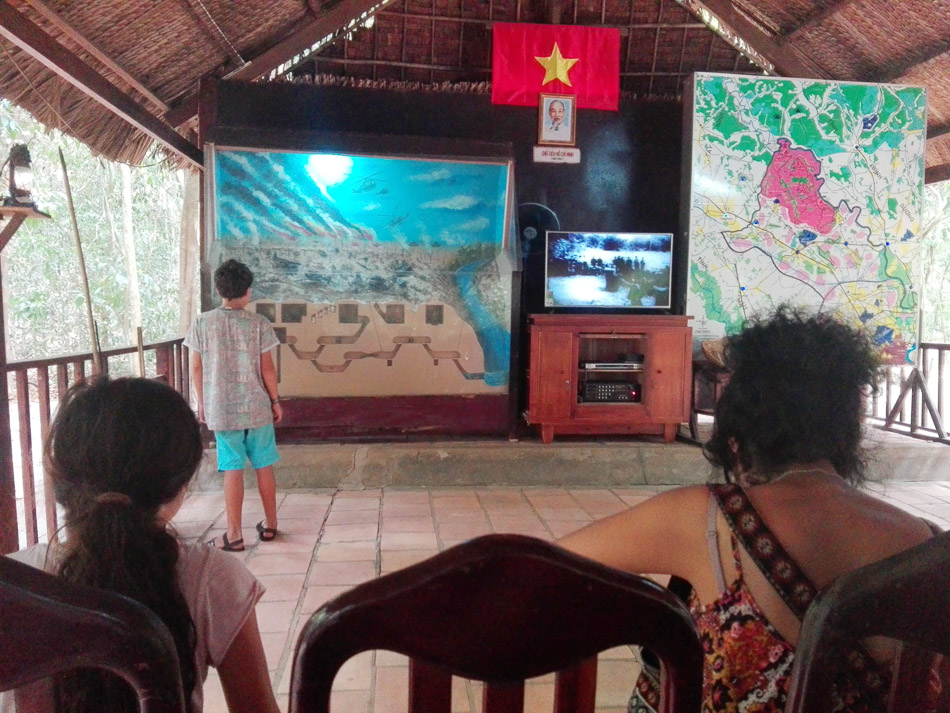
Our guide for the day introduced himself and explained how the tunnels were dug and the underground living conditions the Viet Cong troops had to endure for months.
More aware of what we were about to see, the guide took us on a little journey through the forest, showing us:
- Bomb craters
- Booby traps
- Missiles
- Tunnel ventilation systems are scattered in between trees.
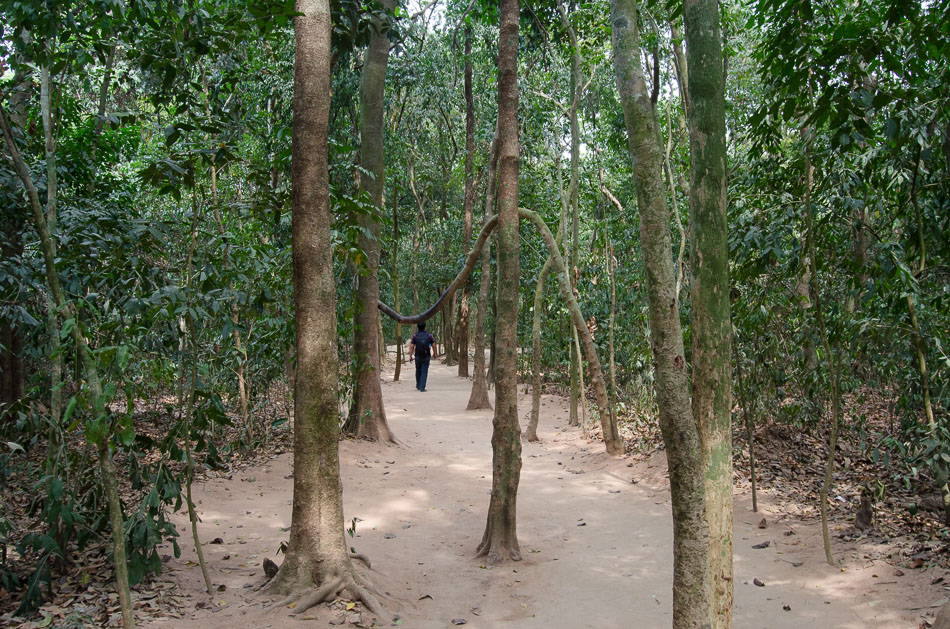
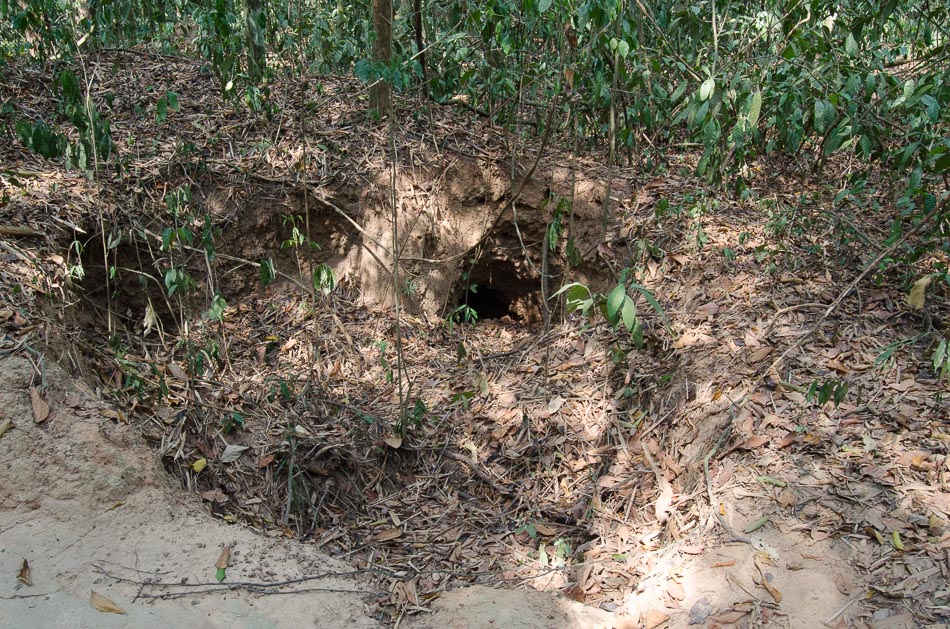
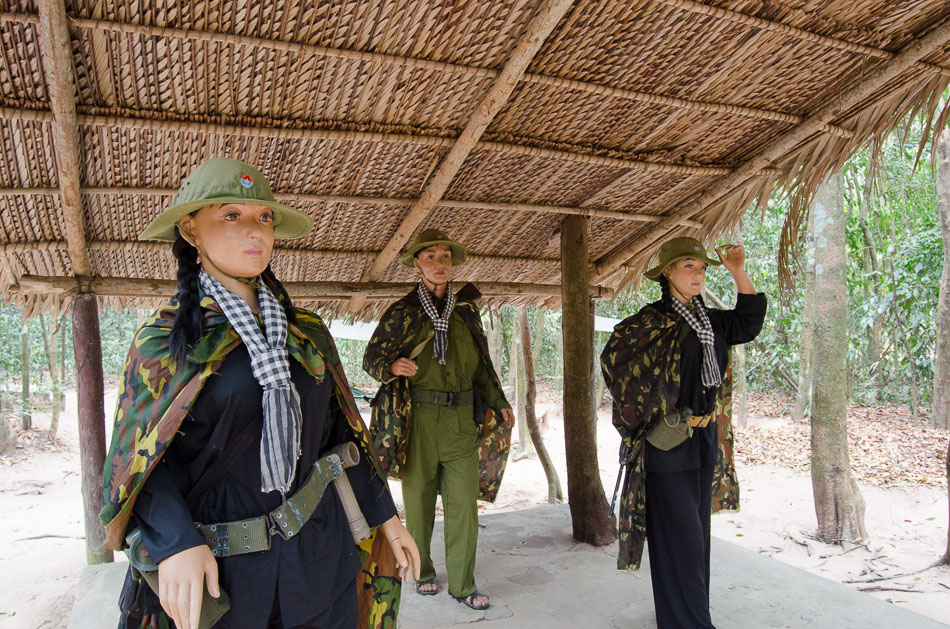
We were all invited to crawl inside sections of the tunnels and it was nerve-racking (especially for two tall guys like Nuno and me).
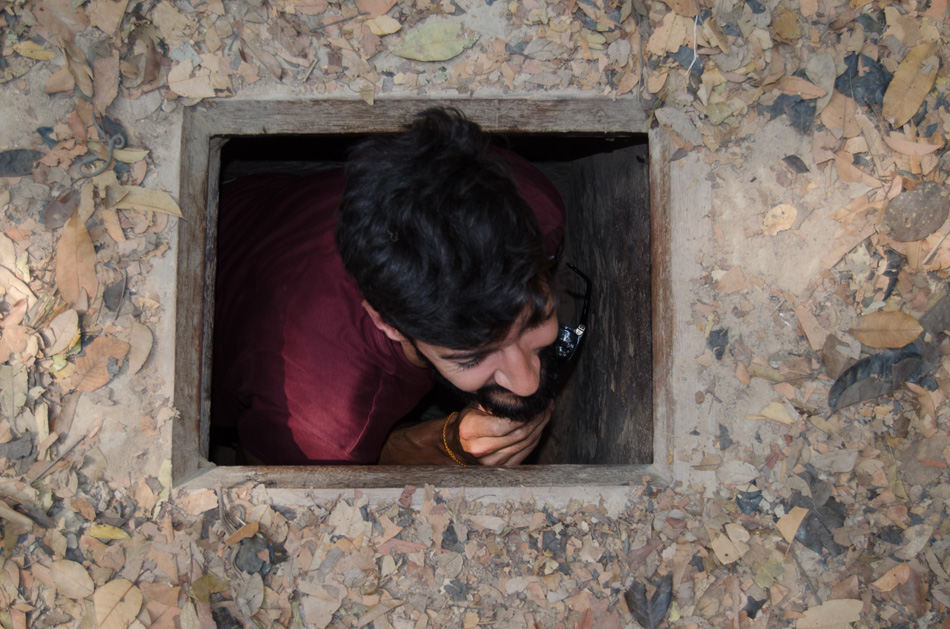
Inside the tunnels, the air was thin and hot. The lights were dim and fruit bats kept flying through people’s hair. If you’re claustrophobic or anxiety-prone, don’t even.
Here’s a short video we made that day:
Afterward, we were called to taste what Vietnamese soldiers ate back then: boiled manioc dipped in salt, sugar, and crushed peanuts.
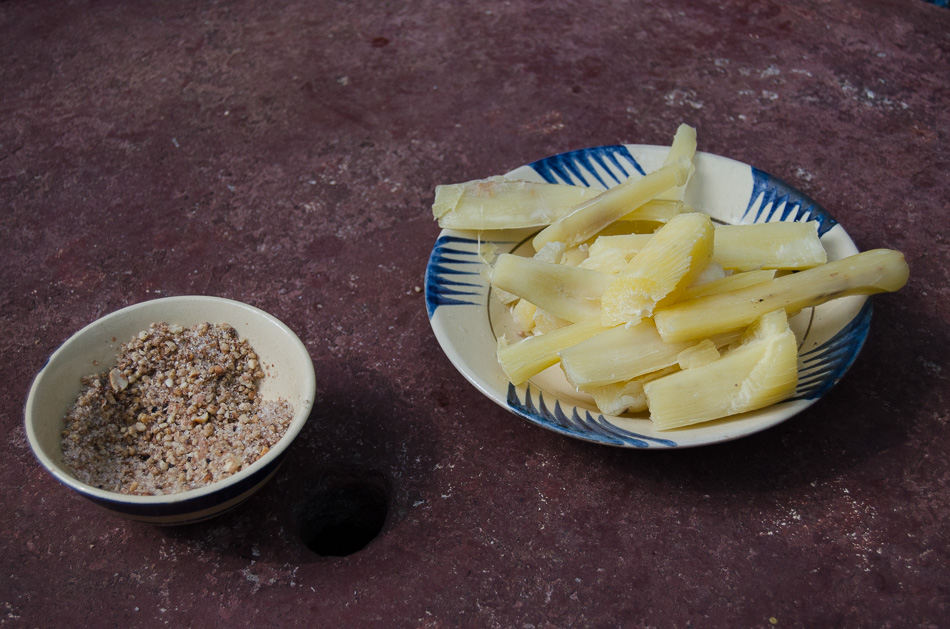
If you’re willing to pay some extra you can fire an AK-47 rifle on a shooting range. In our case, we decided to visit the buildings and gardens around the memorial park. It was nice to see that a battlefield where so many people were killed, now grows beautiful orchids as a form of tribute.
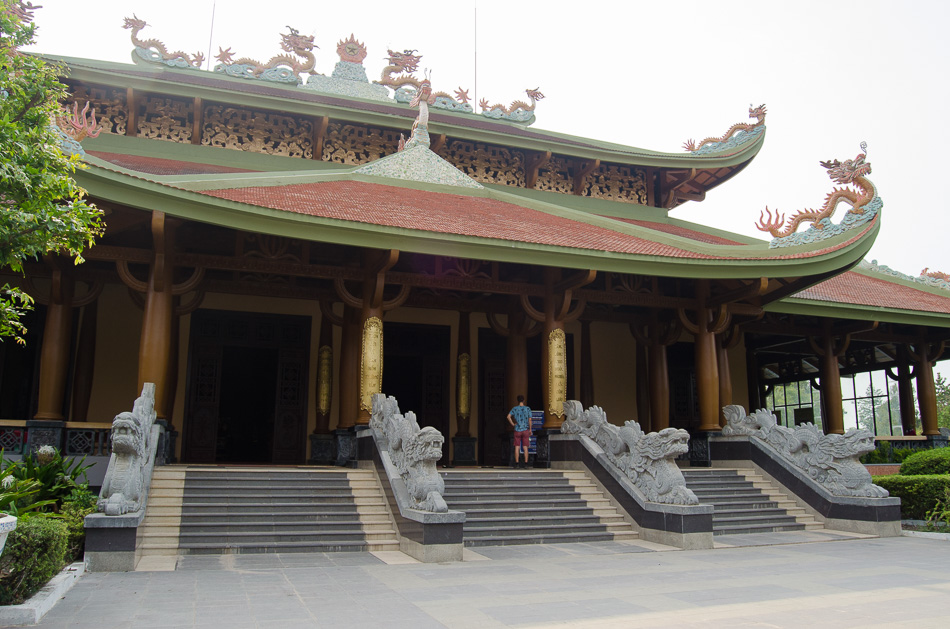
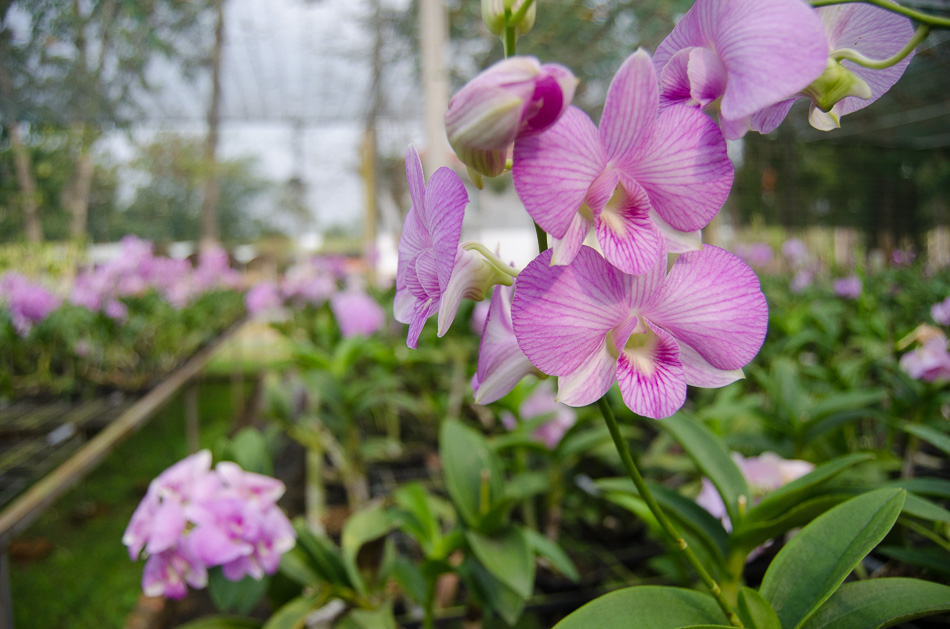
Why were the Cu Chi Tunnels Built?
They’re an underground tunnel system dug by the Vietnamese during the fight for independence against French colonists, then used and developed to fight Americans during the Vietnam War (or American War as the Vietnamese call it). At its pinnacle, the tunnels became a complex anthill with several floors deep, hospitals, living quarters, and communication routes that stretched for more than 250 kilometers long.
Nowadays they’re a reminder of Vietnam’s underground warfare, the determination of its people, and a famous tourist attraction.
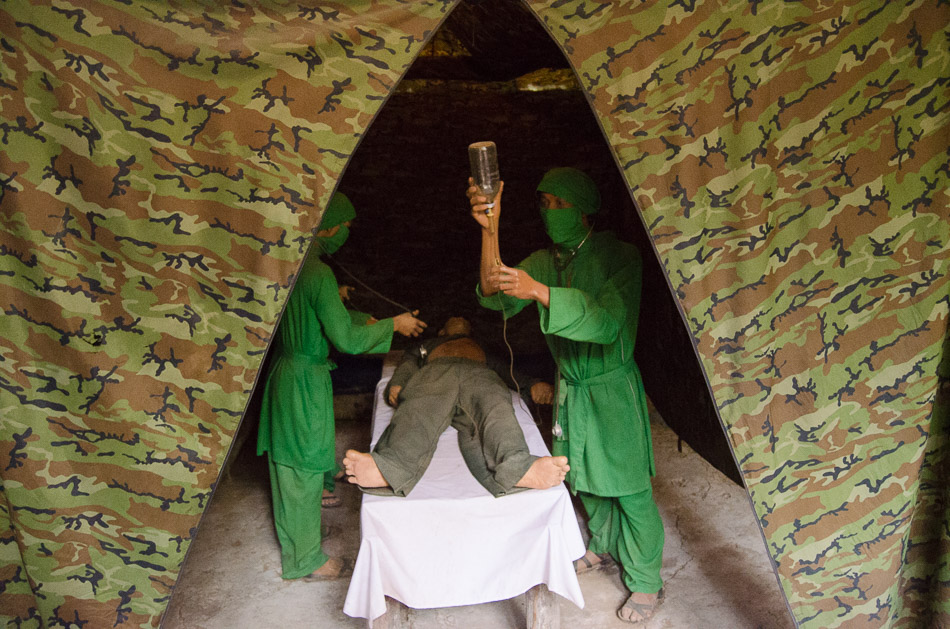
Returning to Ho Chi Minh City
Now that you know how to get to the Cu Chi tunnels by bus, you’ll also need to know how to head back from Ben Duoc to Ho Chi Minh City.
First, have in mind that the last Nº79 bus of the day to HCMC is at 5:30 PM. After that, you’re on your own!
Catch it on the same road you hopped off. Then, at the Cu Chi Station get on the Nº13 all the way back to District 1.
Looking for things to do in HCMC? Check out the post Waking Up in Ho Chi Minh City.
It’s important to mention that the bus rides to and from Ben Duoc were really enjoyable! Experiencing public transports in Vietnam is something you shouldn’t miss, it will make you feel like one of the gang. It’s a great way to chat with locals and meet travelers alike.
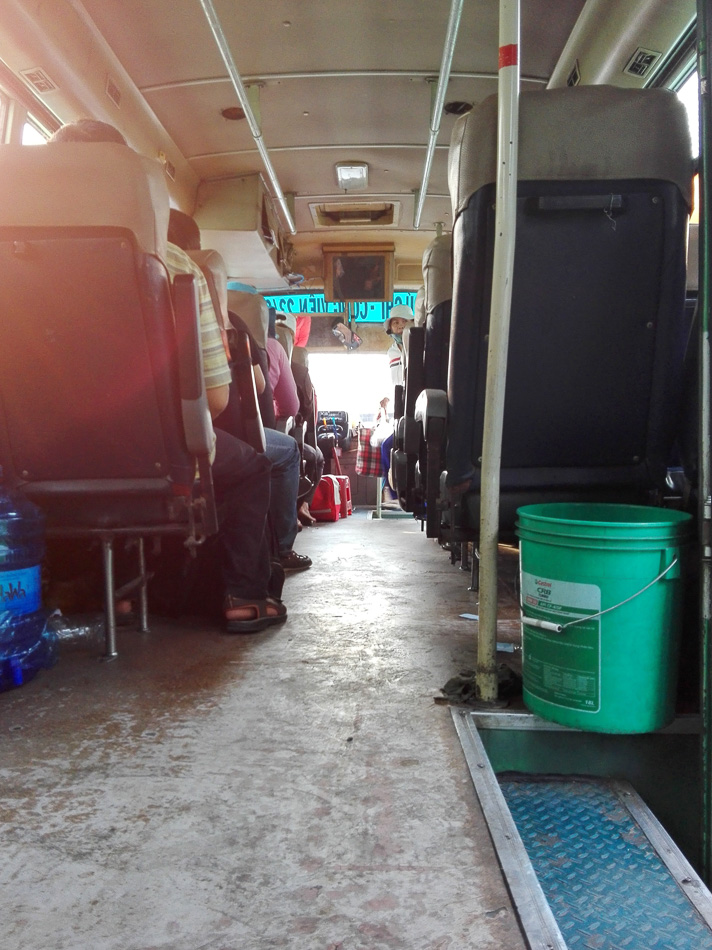
On our way to the Cu Chi Tunnels, we met an Israeli family of 5: mom, dad, and 3 kids with 13, 8, and 4 years old. It was their first time in Vietnam.
The family was traveling for 3 months and the parents were super stoked to be sharing this experience with their kids.
(We’re sharing this to inspire all those parents believing they can’t travel anymore because they have a child. Obviously, travel logistics will be different and WAY more demanding, but it goes to show that it’s possible!)
Why we avoided the Guided Tours
At the reception of our hotel, we saw a bunch of flyers for organized group tours to the Cu Chi Tunnels starting at €6,50 for half a day (entrance fees were not included). Meaning that we would be paying the “tourist fee” for transportation plus getting a time constraint. And even though €6,50 is not that much money, we knew we could do it for at least a third of the money — and actually did it for way less.
If you have any questions or some extra info to share that everybody can benefit from, leave it down in the comments!
The ancient town of Ayutthaya
The town of Ayutthaya is a great place to visit for a few days if you feel like resting from the nonstop buzz of Bangkok.
Ayutthaya is a small town surrounded by three rivers and it once was the state capital of the Kingdom of Thailand, only a 76 km train ride away from Bangkok.
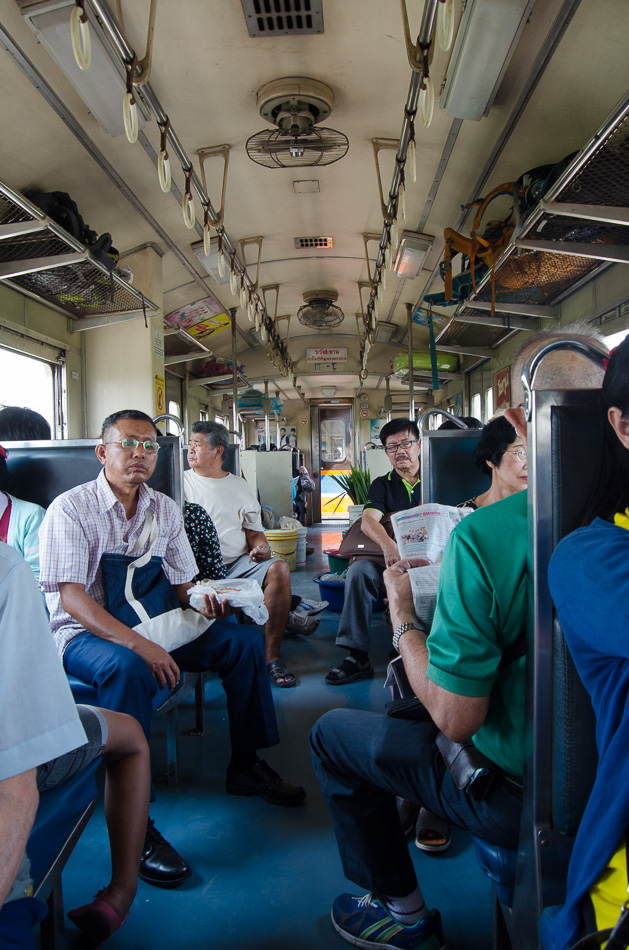
It’s a picturesque 1.5-hour train ride that only costs 15THB in 3rd class, on an old train filled with Thais of all ages. The train passes through sugarcane fields, small villages, temples, rice paddies, and plains.
Being dry season we got to do the entire trip with windows opened, feeling the breeze in our faces, smelling the dust from the land, and listening to birdsongs. We reached Ayutthaya painted in black freckles from the dust.
If you need a snack during the trip, there will be enough vendors with food and drinks to sell at every stop. Some inside the train and others from the outside, through the windows.
As soon as we got to Ayutthaya train station, a flock of tuk-tuk drivers started touting to every tourist in sight, including us.
– Sir, Tuk-tuk? Where are you from? Where are you going?
From the train station to the city
To get into town, you need to cross the bridge or get a boat (4THB).
Stubbornly, we decided to decline every tuk-tuk offer, taxi, and boat crossing opportunity, and did it all by foot, carrying 4 backpacks under intense heat, at 12:00 PM. Did we mention the dry season? Yeah.
We ended up walking for 40 minutes until we found our hostel: One Baan Love.
Ayutthaya Temples entrance fee (2023)
Even though it is free to enter the Historical Park, there’s an entrance fee at almost every temple in Ayutthaya. So the alternatives are: buying a full ticket for 220 Bahts that grants you access to 6 temples:
• Wat Phra Si Sanphet,
• Wat Chai Wattanaram,
• Wat Phanan Choeng,
• Wat Phra Mahathat
• Wat Ratburana
Or you can pay 20 to 50 Bahts at the entrance of each temple.
We decided not to buy the full ticket and chose the ones we wanted to get in.
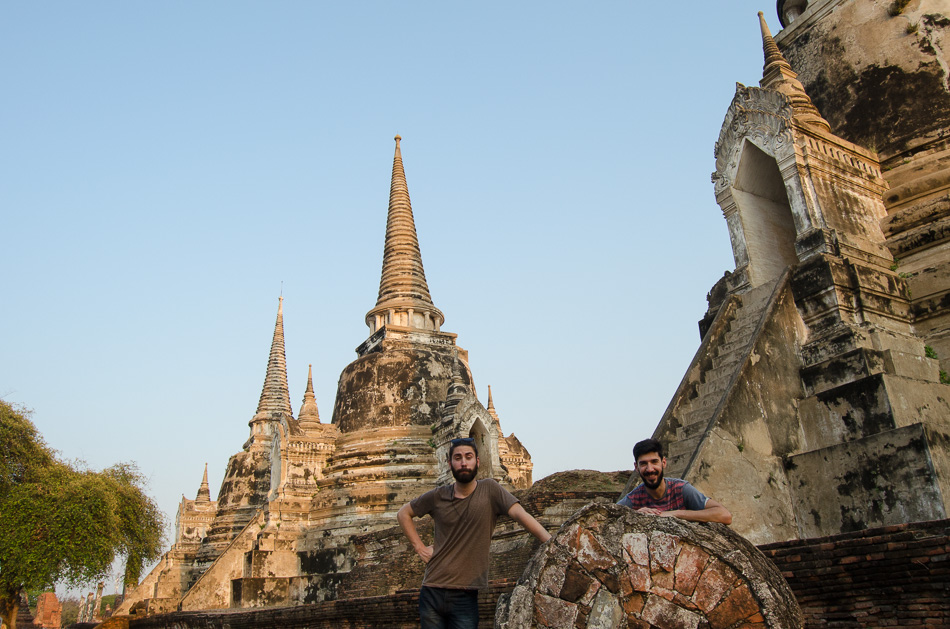
As in any other Buddhist temple, you’ll need to dress appropriately: no daisy dukes, bikini tops, or bare shoulders. Ladies, you should wear something appropriate as well.
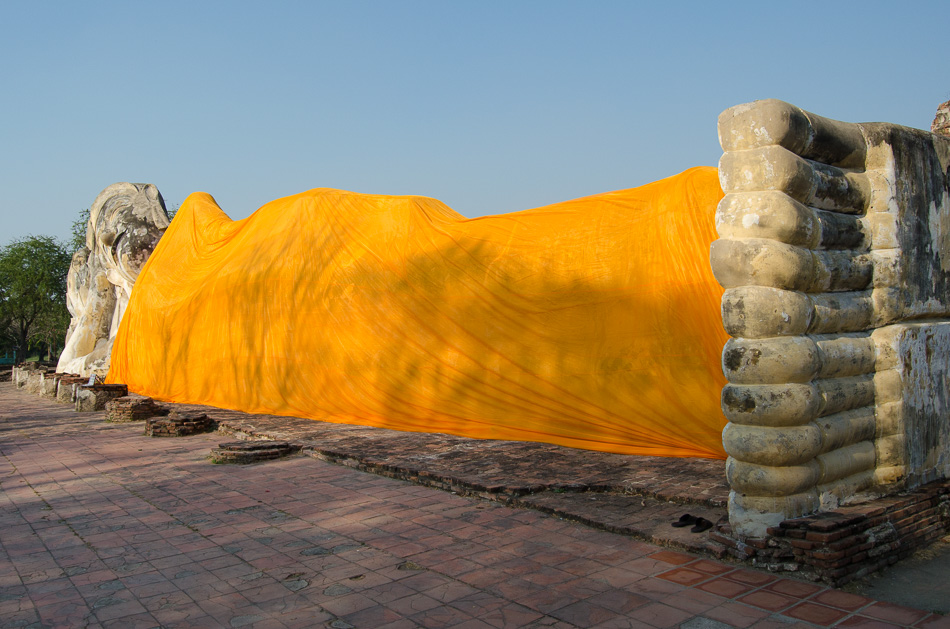
All temples open for visits at 8 AM, some of them close at 4:30 PM, others at 6 PM.
Tip: if you want to enjoy some of the temples for yourself, visit them at launch hours (12:00 PM to 2:30 PM). Wear sunscreen.
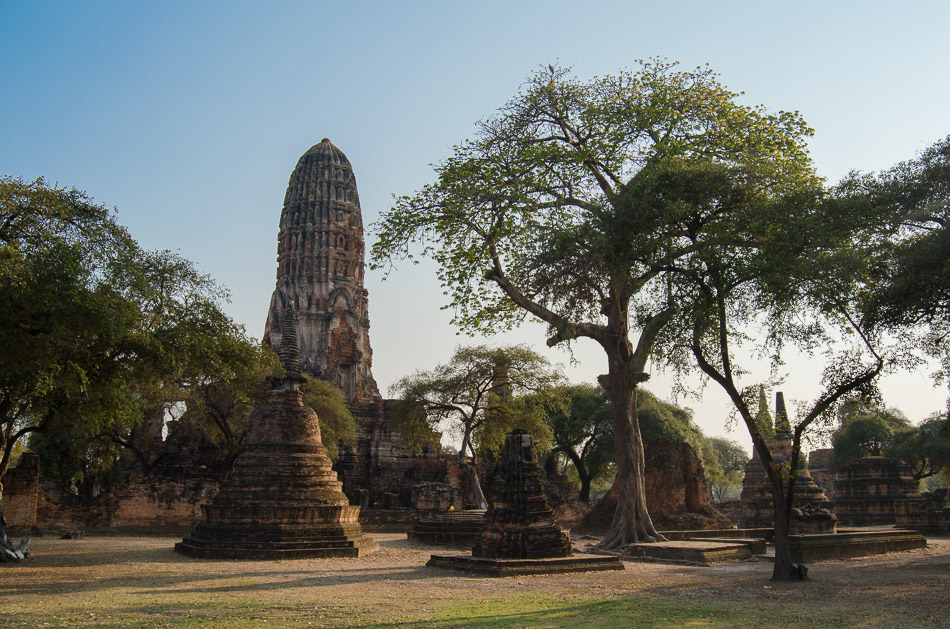
The temples are designed in Khmer style and most of them are in really bad shape, mainly because of the Burmese destruction back in the day: Buddha sculptures were beheaded and many stones were stolen.
Regardless of all that, the ruins of the ancient town of Ayutthaya are impressive!
You can understand their original size and architectural detail in the mockups at the entrances.
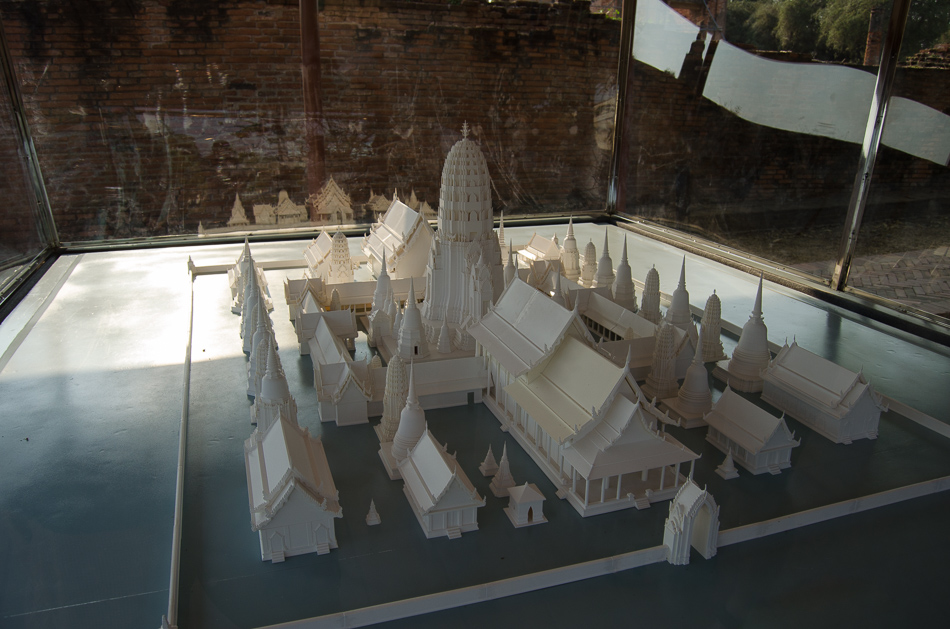
Some of the sites were under conservation and restoration work to repair the damages caused by the floods in recent years.
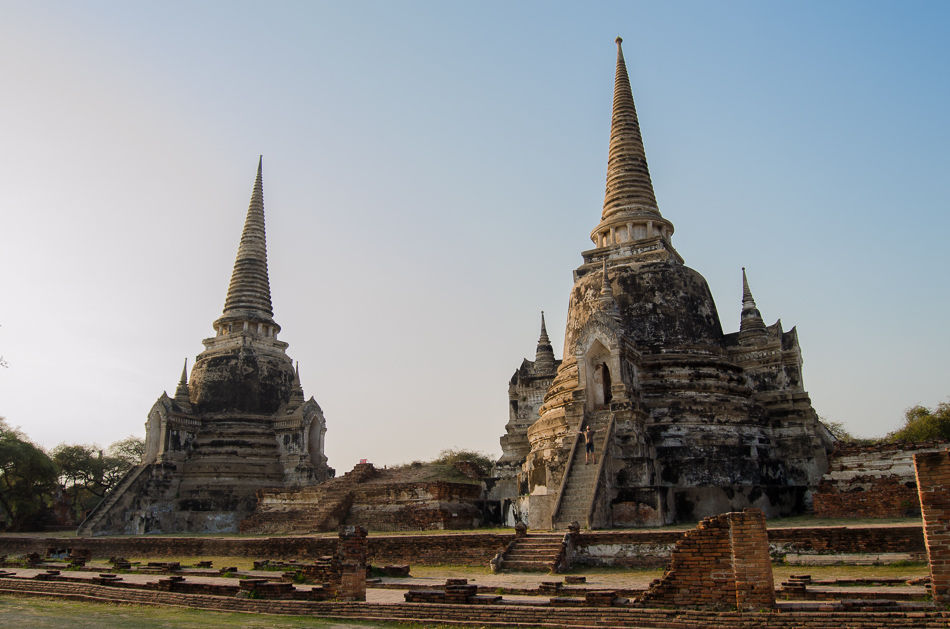
The temples are solid and tower-like, so even though you can climb the stairs on some, you cannot go inside. Also, some stupas are closed to the public. We were only able to visit the stupa of Wat Phu Khao Thong.
In two days we managed to visit:
• Wat Choeng Tha
• Wat Phu Khao Thong
• Wat Na Phra Men
• Wat Lokayasutharam
• Wat Thammikarat
• Wat Phra Si Sanphet
• Wat Chai Wattanaram
• Wat Ratburana
And left a whole lot to see.
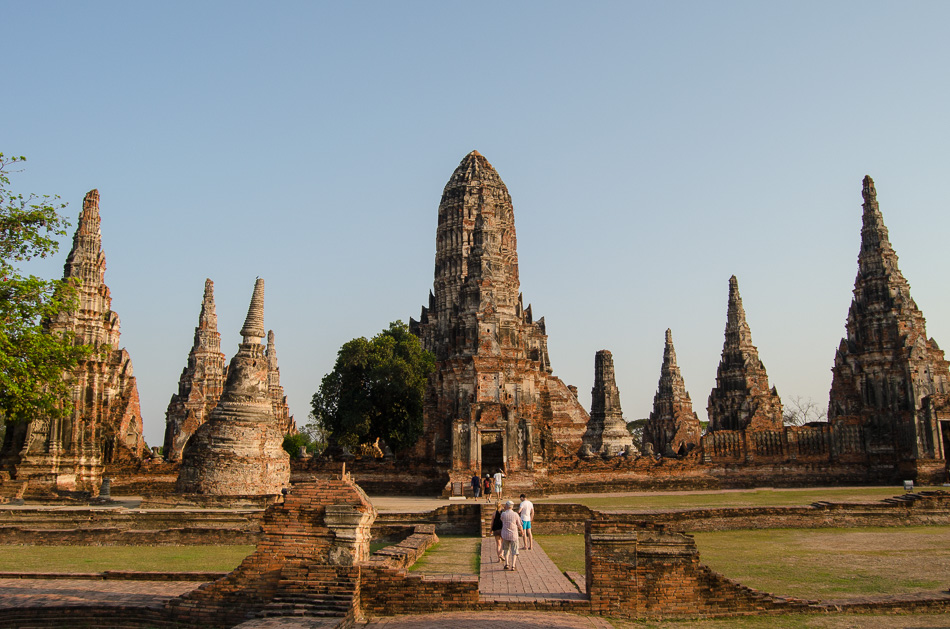
Looking back, we should’ve spent more than 2 days in Ayutthaya. The sunsets at Wat Chaiwatthanaram are incredible and we wouldn’t mind the opportunity to see one more.
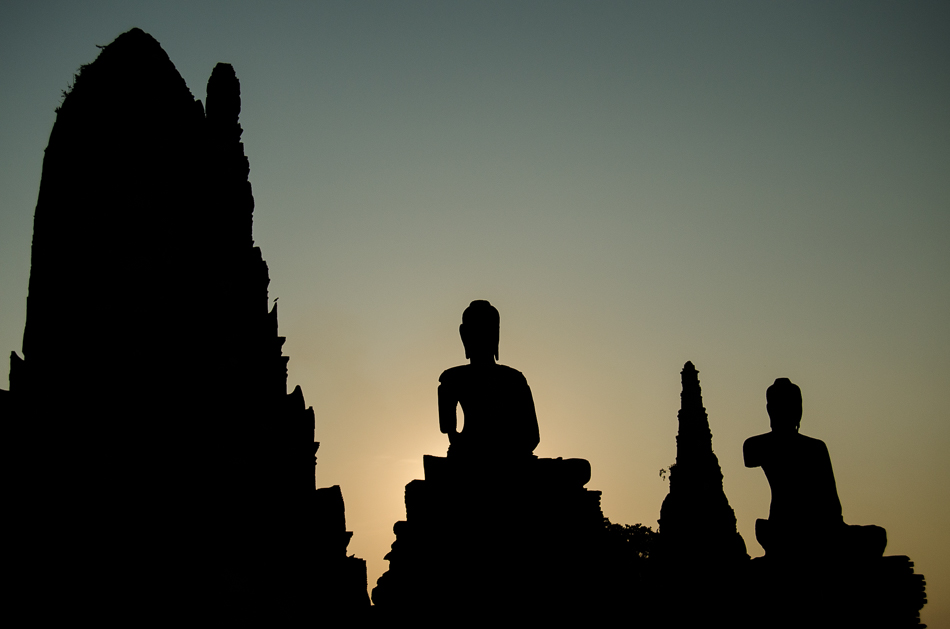
Riding a bicycle around town
The majority of the temples are in the central part of town, so to reach the further temples, we rented 2 bicycles for 40THB each.
P.S- You can find even cheaper bikes if you rent them out of the city center.
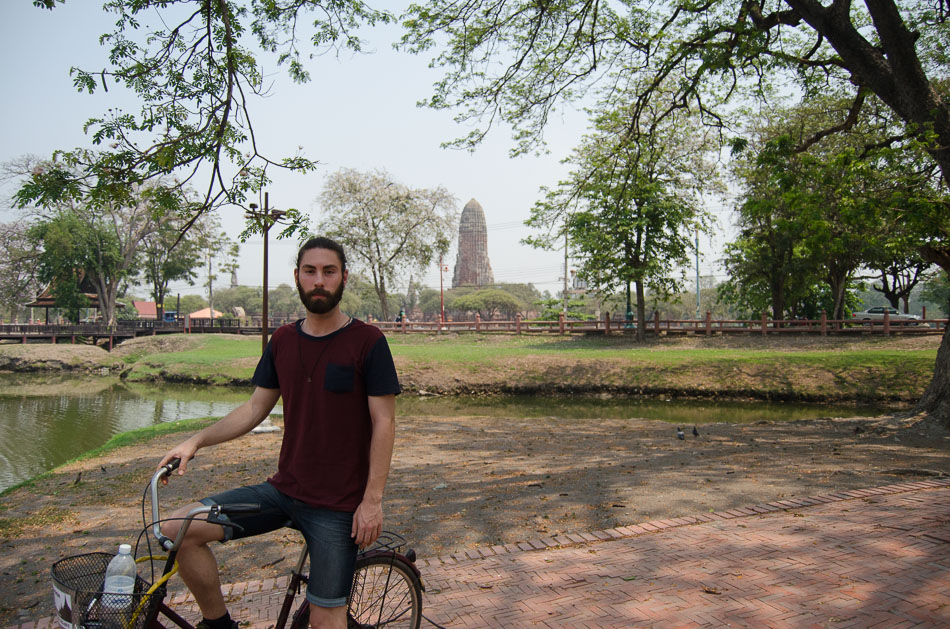
Is fairly easy to rent a bicycle anywhere in Southeast Asia, plus the flat terrains and the great weather makes them the best affordable choice to move around.
Ayutthaya, being way less popular than Bangkok is also less touristy
There is less accommodation to choose from and a bit more expensive than the capital. Restaurants do not abound, especially if you come from the jumble of street food in Bangkok—but prices are quite similar. If you get out of the temple area, you can have a good meal for 35THB.
A post shared by Mario and Nuno | Travel (@helloplanetgravy) on
In our quest to find food, we crashed a local graduation party in an open sports field packed with food stalls and teenagers. We were hungry and new in town. Don’t judge.
While we were waiting in line to get food, some locals approached us and asked to take some photos with them. Maybe the sight of two tall, bearded dudes in the middle of a high school graduation party seemed funny to them.
Speaking of locals
All the interactions we had were kind and genuine without the ulterior motives you can’t help to feel in Bangkok.
Also in several places, we found warnings about stray dogs that like to jump at people. We never had any problems, probably because our legs are too skinny for them to bother.
If you must, use your tourist sword to scare them away — a selfie-stick can be a powerful weapon — use it wisely.
Ayutthaya travel expenses (daily average for 1 person)
Breakfast: € 2,06
Meals: € 1,35
Water: € 0,20
Hotel: € 9€ (Private double room)
Bicycle rent: € 0,64
Train: € 0,58 (Two way trip to Bangkok)
If you have any questions or some extra info everybody can benefit from, please leave it down in the comments!
10 ways to keep the travel spirit alive
So you’ve returned home after a big trip, unpacked your stuff, and put away your passport in a drawer. Now what?
Now you’re probably starting to crave some endorphin-pumping adventures again. We know the feeling ̶ you’re hooked on traveling.
But why do we only tend to feel this enthusiastic about places away from home?
For starters, because travel stimulates our brains and spirits the way the familiar can’t. That’s why every return home can be a tricky transition period, and why we have to manage it in the best possible way: by actively keeping our spirits up and carry on doing EPIC SHIT.
But if you’re feeling blue, here are 10 ways to get you out of that post-travel funk:
1. Keep the traveler mindset alive
What is that you did on your travels that you can keep doing now?
Look at things with a new set of eyes and from a different perspective. For instance: if thousands of tourists visit my hometown every year, they must do it for a reason!
Make an effort to explore your surroundings, or at least meet your friends at a different place ̶ why should it always be in that same cafe?
2. Be grateful
Be grateful for being surrounded by friends and family again, for your soft mattress and home-cooked meals. Revisit your favorite places more often, and find out what is that you like about them.
Be grateful for all that your hometown has to offer, even the small conveniences you wished you had while you traveled. For instance: as huge bread lovers, we recall craving almost every day for a bakery like the ones we had back home. Now that we’re back, we can stuff our faces with all the white bread and gluten we want!
Be grateful for the privilege of having traveled, and remember that coming back doesn’t mean that a chapter of your life has closed forever.
3. Take time for yourself
If you traveled long-term as we did, you remember how good it felt to take ownership of your time and self-indulge.
What were the things that you enjoyed the most? Have you taken time to re-connect with yourself since you came back?
And we’re not talking about binging the last season of your favorite show, we’re talking about fruitful, soul-pleasing time.
Go watch the sunset on the beach and meditate, read a new book, ride your bike around town.
If you’re into physical activity go trekking, get your heart pumping while getting in contact with nature.
4. Sign up for a class
Keep the momentum going and your brain stimulated by learning a new language ̶ one from a country you’ve been, or from a country you want to visit next. Seize the opportunity of your mind still being open and fill it in with knowledge!
Enroll in that yoga class and see how it goes.
Register for the marathon you always said you wanted to run.
5. Cook and Spice up your life!
Cook for your friends and family some of the exotic foods you’ve eaten abroad. Remember that being the only one who knows how the food is supposed to taste, you can pretend that you nailed it even if it ends up tasting like hot garbage. They’ll never know!
I’ve been following the recipes from a few books and these Youtube channels: Palin‘s Kitchen and Marion’s Kitchen. The Thai green curry, the fried rice, and Kung Pao Chicken have become crowd favorites at home. Next challenge: Thai Fried Bananas.
6. Get involved in a project
Start a personal project with your travel photos, set up a travel exhibition in your town with all the memory cards and gigabytes of pics you brought back. It’s an excellent way to share your stories with your community and friends. Start a Youtube channel and do something fun with all the videos recorded on your trips.
Last December Nuno and I did a Travel gathering in our hometown of Aveiro. A bunch of cool people came to hear our stories, see our photos and make some questions. It ended up being a 3-hour session dedicated to Southeast Asia and Australia.
We’re still getting facebook messages with questions from people about to travel through some of the countries we visited. And it’s super rewarding to be able to help.
7. Connect with other travelers
Another awesome way to connect with folks who groove on the travel culture is to read and comment on blogs and videos. Talk up travel with like-minded people, join Facebook groups ̶ you probably have pretty valid inputs to share.
Take in Couchsurfers, show them around town. Stay in contact with people doing what you love doing, stock up on some of their travel enthusiasm and keep that fire burning.
8. Get a makeover
A week after I arrived from Southeast Asia, I started to feel down in the dumps. It was like my brain was starting to forget all the cool stuff I lived, and something had to be done. So I used my body as a physical representation for change: got a haircut, took my earrings out, and trimmed my beard.
Now I and everyone around me is reminded that something has changed in me, inside and out. So I better behave accordingly.
9. Goals and Resolutions
Often the arrival of a New Year isn’t a big enough motivation to establish a new set of goals for ourselves. How many times did the calendar change and our lives remain the same for that entire year? That is because a New Year doesn’t imply transformation, but a life-changing event can be at the root of it.
The moment to rethink, reprioritize and let go of what’s not working for you, is at pivotal moments of your life, such as a trip around the world, college graduation, the birth of your first child.
There’s no better time to declare a new set of goals than when you get back from a trip all inspired and renewed. Now is the time to shift your goals and have them match the new expanded version of you.
10. Plan your next trip
Any thoughts on where to go next? Daydream with your next trip, research locations as an escape.
Start putting some money aside for it, set up a money-saving strategy ̶ if you did it once, you’ll be able to do it again.
Do whatever it takes to keep the adventurous travel spirit alive, and above all, ease yourself to the inevitability of routine. Find a way to retain the optimism and enthusiasm around by keeping busy ̶ purposefully busy ̶ instead of biting your nails out of boredom, or stain your travel memories with sadness.
Maintain your heart open, and transmute that stagnated yearn for adventures into risk-taking or life-changing matters. Move out, change the scenery, change jobs, color your hair, get a perm, propose, love yourself harder! Just don’t forget who you became and that you’ll travel again.
What have you been doing to keep the travel spirit alive? We’d really like to hear it.
Share it in the comments below.
How traveling can break daily-routine, promote good habits (and change your life)
We can all agree that routines make our lives boring.
That being said, not all routines are bad. I’m an advocate of hot water with lemon every morning, and my regular bowel movement is quite convenient. 😀
But when work started dictating most of our time, life became way too rigid and predictable. We don’t choose when to wake up anymore, where we’re going to spend our day or even the people we’ll be with most of our waking hours.
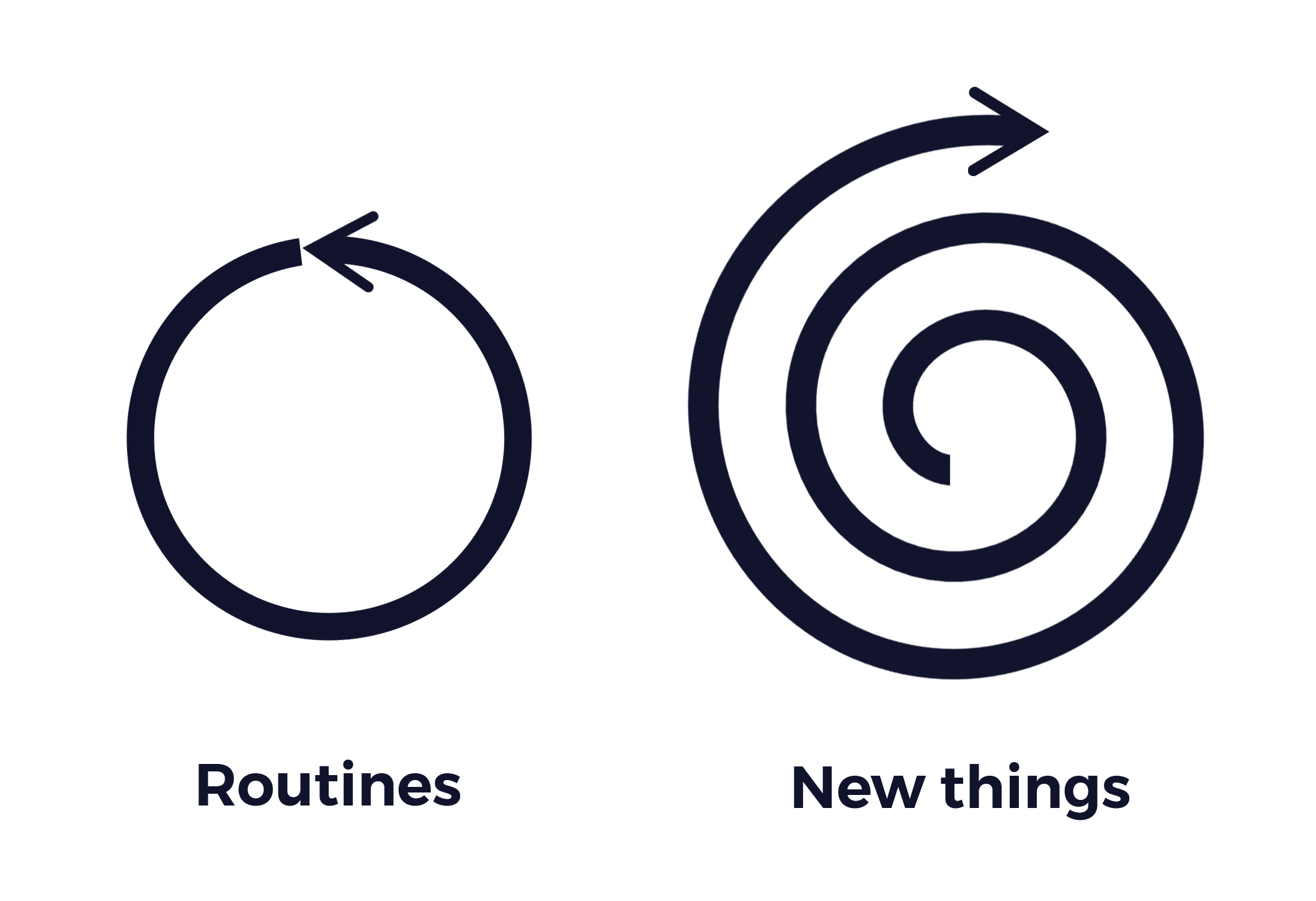
And yes, a routine may be the easiest way to organize life and prevent our brains from melting, but it’s also what makes us indifferent to the wife’s new haircut or to the fact that spring has arrived.
Why we Decided to Travel
It all started when we couldn’t differentiate the current year from the previous. The calendar kept moving but our lives felt stuck. Life was a tasteless soupy snoozefest and something needed to change.
Thus, considering that change is usually outside of our comfort zone, traveling felt like the perfect fit. Nothing is more effective at smacking us right out of the humdrum like travel is.
We’re all Creatures of Habits
But weirdly enough, adapting to our new reality on the other side was easy. Including having rice for breakfast, the weight of our backpack, and even the tropical heat.
And we managed to do so by creating routines, only this time, they seemed to be aligned with our new set of goals:
• To experience change
• To see the world
• To build courage
• To grow
More than that, they brought the realization that routines are not the problem, lackluster goals are!

The importance of a seasonal reality check
How was the everyday hum back home supposed to make sense when the final goals didn’t feed our soul?
Do you still want the things you’re supposed to be striving for?
Are the intentions you set 5 years ago still the same?

We should analyze our lives frequently and readjust their course, especially towards long-term goals. This is how travel can serve us, as a way to unplug and:
• Create time for reflection
• Expand our world
• To be inspired to live a better life
Not so much as an escape from problems or momentary dissatisfactions. After all, shitty situations in life usually require some confrontation and management from our side.
“Instead of wondering when your next vacation is, maybe you should set up a life you don’t need to escape from.” – Seth Godin
Aligning with a purpose in life provides motivation, vindicates routine, keeps you present, and makes a world of difference between living and merely existing. Meanwhile, if you can’t take a travel break: tweak your routines around, fuse into them good habits — the ones aligned with your goals — and let some of the bad ones go. Line up with what makes you happy.
Oh, and if you just came home from a trip, read this blog post about good habits and keeping the travel spirit alive.
Are you frustrated with your daily routine? Share your thoughts in the comments.
Thanks for stopping by!
Siem Reap for first-timers (What to Expect)
After the whole border situation entering Cambodia, we arrived in Siem Reap hesitant about the days to come. You can read the whole story here → Crossing the Infamous Poipet Border in Cambodia.
Siem Reap is a “small city” that rapidly grew and adapted to the massive tourist influx at the expense of the Angkor Temples. A river also called ‘Siem Reap’ divides the city in two. In the Royal Gardens, you can rest and escape from the afternoon heat under the old trees. Here’s where locals come to relax on the benches, socialize and play jianzi.
The sunlight has a magical deep orange hue and the city seems to be calmer around this area. There aren’t many people in sight, only a few local passerbyers, and businesses seem to be slow as most tourists are hiding from the heat or visiting the Angkor temples.
At the beginning and end of each day, an amusing anarchy in traffic starts. Cars, tuk-tuks, and minibusses packed with tourists come and go to the temples. Scooters and bicycles run wherever as fast as they can. Sidewalks are parking spots and pedestrians are forced to walk on the road — it’s every man for themselves.
Breathe in, breathe out
In Siem Reap, tuk-tuk drivers are next-level annoying. All they want is to take you on a tour of the temples or sell you some cocaine — both preferably. They’ll be parked on random streets, and outside every restaurant, hotel, and coffee shop waiting for tourists.
At the moment they see you asking for the bill in a restaurant, they’ll start touting. They will shout, whistle, clap, and hiss to get your attention. It’s intense. Breathe in, say ‘thank you’ and keep moving.
Tasting the gravy
Khmer food is amazing, and Cambodians are like wizards of pepper: amouk is great, Lok Lak even better. The spicy mango salads and the pork with pineapple are to die for.
Try all of the above with a fruit smoothie, any fruit smoothie.
We had the majority of our meals in a great restaurant called Moul Chheng Heang, near our hostel. The food was delicious and so were the prices, but what made us return every night, was the lovely enthusiastic lady running the restaurant.
She finished every sentence with:
– Yeah, yeah!
And lovingly made us promise we’ll return the next day.
– See you tomorrow. Ok?!
– Ok.
– Yeah, yeah!
Tip: The average street food costs 2,5USD. In restaurants near Pub Street meals start at 7 or 12USD. In most supermarkets, water is more expensive than in restaurants.
A dolla’ makes them holla’!
It’s weird to see an entire country on the other side of the world running on dollar bills.
Throughout Cambodia, you’ll need US dollars for everything: food, hotels, entrance fees, and transportation. They don’t care for their currency, so if you try to pay anything in Rhiels, they’ll roll their eyes at you.
Oh! And you better keep the dollar bills in pristine condition or they won’t take them.
The problem with the dollar bills is that everything got more expensive. There aren’t any nuances in prices and everything got rounded up to 1USD, 5USD, or 10USD.
Banks will give you dollar bills by default when you use any ATM, and the average fee is 4USD for each withdrawal.
A tip for European travelers: even though there’s a money-saving tip on Lonely Planet about Canadia Bank not charging any fees, it doesn’t work for European debit or credit cards.
Pub Street at night
Everyone comes here when the sun goes down: locals, backpackers, and tourists of all ages come to eat, drink and shop around. The street is filled with restaurants, massage parlors, coffee shops, and bars. And there’s always a happy hour somewhere.
Color is everywhere: in the neon lights of the bars, the tropical fruit in smoothie carts, the brightly lit bridges, and in the night markets on both sides of the river — Old market, Angkor market, and Night market.
Interacting with locals in Siem Reap
Unfortunately, every conversation that occurred was intended to make a sale and was definitely not in our best interest. As tourists, we got singled out and only treated as such. Locals couldn’t care less about your presence, so conversations never happened.
Siem Reap travel expenses (daily average for 1 person)
Water: 0.28€
Accommodation: 14.20€
Bicycle: 2.66€
Meals: 3,10€
Laundry: 0.87€ per kilo
If you have any questions or some extra info to share, please leave a reply. Thank you!
Crossing the Infamous Poipet Border in Cambodia
Advice on Cambodia Visas
If you’re considering crossing the border by land from Thailand to Cambodia through Poipet, we recommend getting an E-visa beforehand at www.evisa.gov.kh.
The e-Visa costs 35USD (5USD more than the visa on arrival) but it’ll save you from the stress and the “processing fees” charged on the land border. Better yet, if you want to cross the border smoothly, do it by plane as there are no scams in Cambodian airports.
What happened to us when crossing the land border to Cambodia was quite stressful. The infamous Poipet lived up to its reputation.
We woke up after a really bad sleep in Bangkok, to catch the 5:50 AM train to the border town of Aranyaprathet for a 7 hour trip through the central plains of Thailand. It’s a really pleasant trip that costs 48THB.
(By the way, if you’re looking for transportation from Thailand to Cambodia check www.bookaway.com. They have plenty of options at great prices, plus, if you use the code “gravy5″ at checkout you’ll get 5% off your ticket price).
We started with a plan
It’s important to say that every plan or decision we make comes from what we’ve learned from travel books, blogs, the experiences of other travelers, and a little dash of intuition of our own. We do our homework pretty well. Studying and preparing ourselves with a good itinerary and a plan.
The plan for the day was to get off the train in Aranyaprathet, get a tuk-tuk to the Thai border for 80THB, get a stamp from Thailand to get out and a stamp from Cambodia to get in. Simple.
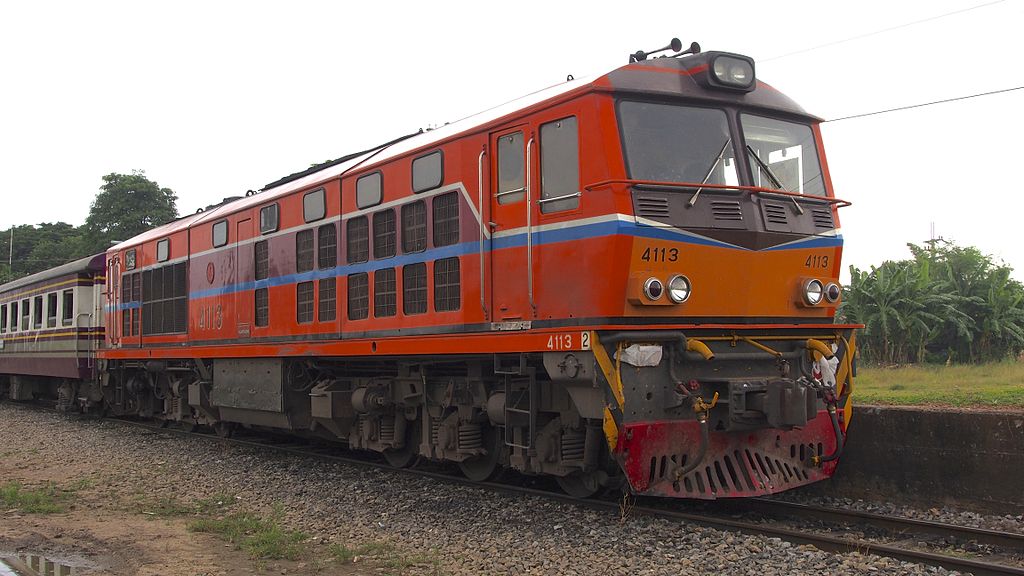
Clay Gilliland
The tuk-tuk cost us 200THB for a 10-minute ride. Fortunately, we ended up sharing the tuk-tuk with two American backpackers: Ryan and Winslow, that we had the pleasure to get to know along the ride.
At the Thai border (Aranyaprathet)
As soon as we got to the Thai border, we started walking to the building along with many other tourists and backpackers. There was a local market around, lots of tuk-tuk drivers and other random men. We immediately followed Winslow — the seasoned traveler from New York, coming to Cambodia for the second time.
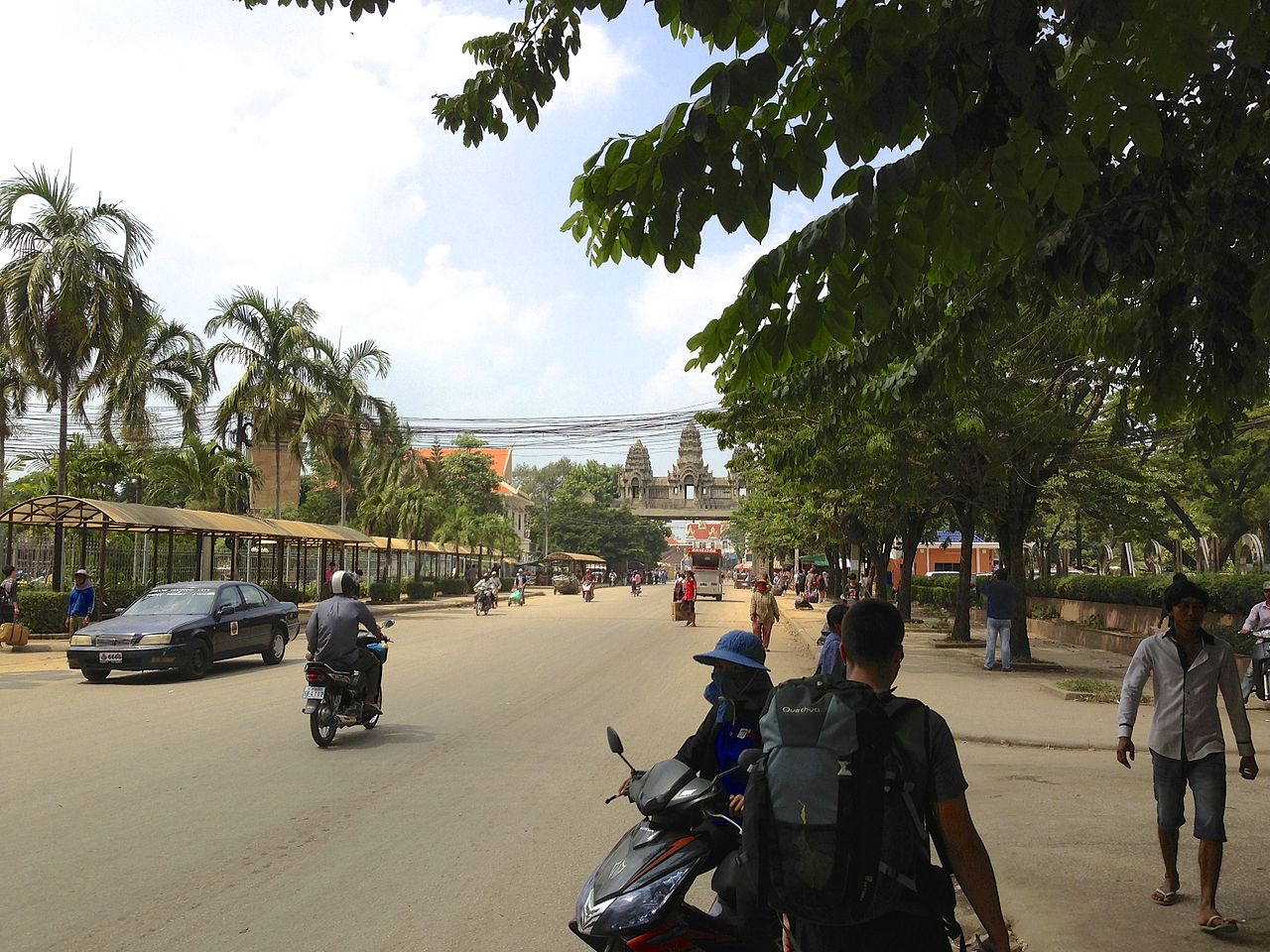
Clay Gilliland
Inside the building at the foreigners’ queue, we filled the departure card, handed over our passports, got a photo taken and our passports stamped. Super easy!
Went down some stairs and entered no man’s land and a bridge over stagnated water. At the end of the bridge, some dodgy men in hats were allegedly selling illegal visas, but none of them approached us. We just kept walking to the right end of the bridge into the Cambodian border offices.
The welcoming party at the Cambodian Border (Poipet)
As soon as we got in, a government official gave us a form to fill in.
We filled the form and prepared a photo, our passports, and the 35USD each (just as it said in every textbook, travel site, and in the big sign above the office counter). As we tried to hand them to the border officials behind the counter, they refused to take them, pointing to a handwritten sheet of paper that said “35USD + 100THB”.
So there we were in front of border corrupt government officials, trying to extort some extra money from tourists crossing the border. Just exactly as every textbook, travel site, and Winslow warned us. Great…
A little intimidated Nuno and I (plus all the riled-up backpackers in the queue) refused to pay the processing fees, which only made the officials speak louder in Khmer and point extra hard to the “100THB” in the paper.
The waiting game
Seeing that we weren’t going to give in, they took us aside, made us sit on some plastic chairs, and ignored us.
By then everyone is annoyed, anxious, and tired from the long train ride. After what felt like forever, a cranky officer came and took our passports and forms.
20 minutes later he came back, yelling our names and handing out our passports and visas. We got out of there as fast as we could.
Still trying to process what had happened, another officer took us to another long queue. This was the queue to get our visas stamped. Now, unfortunately, there was a power outage and no power means no processing tourist visas. So we had to wait. Under a boiling metal roof.
After 20 minutes, the power finally came on. Once again, we gave our passports to the officer, he took a webcam photo, moaned something, stamped the passports and we got in.
Siem Reap off!
After this whole border mess, we just wanted to get to the next bus to Siem Reap.
From what we’ve read, the bus station was nearby and the bus would prevent us to get ripped off by taxi drivers that wait for tourists at the Poipet border roundabout.
Ryan, the backpacker we met at Aranyaprathet asked Winslow, Nuno, and I to share a taxi. Our minds were still fuzzy from the heat and the border stuff, so we said yes!
We just wanted to calm down, and rest.
The taxi ride was 2h30 and cost us 48USD. Quite expensive considering it was not a taxi at all. Just a dude in a car, moving people from here to there in his spare time.
At least he had air-con and promised to leave us at our hostels.
Arriving at Seam Reap, the driver turned in a random street, pulled over, and told us to get out. We had no idea where we were, and outside the car, a group of Cambodian men were already taking our backpacks from the trunk. Something wasn’t right. And it the second time that day we felt like shitting our pants.
Winslow was the first to get out of the car and started yelling at the driver. Things got pretty heated and the Cambodian men started surrounding Winslow and us.
Basically, it was all a scam:
The fake taxi driver overcharges tourists at the border and dumps them in that corner of Siem Reap where other tuk-tuk drivers await. The tuk-tuk drivers will then take the tourists to their hotels – for more money obviously – and ideally get booked to show them the Angkor temples for the next days.
Winslow refused to pay the taxy driver and refused to go on any tuk-tuk, screaming and threatening to call the police. By now the tuk-tuk drivers were also yelling, laughing, and making fun of him, which only made things worst.
What the f*ck have we got ourselves into?
Shit was about to go down when the taxi driver, backed down from the argument and said he’d take us to our hostels. As soon as we saw the famous Pub Street, we got off the car and figured the rest out.
Not a good first impression of Cambodia.
It was quite a rough day but hey, it’s all gravy!
Tricks and Hacks For Long Train Rides
In some parts of the world, riding the train is just a way of life. Yet, some of us live where there is no train service easily accessed. So if you are an avid train rider, this may sound silly to you, but keep in mind there are others reading who are about to embark on their very first train ride. If that train ride is a very long one, they have no idea what to expect. Still, read along, you may find a few hints that you can use as well.
Baggage
You will have a baggage allowance. You will be allowed to check your baggage if you choose to. Most advise against it. There is plenty of room to stash your bags overhead and there are little places like where back to back seats form a V that you can shove a bag into. If you pack smart you will have not problems taking what you need along with you.
Besides your bags consider a small backpack to wear on your chest, You can wear one on your back too, but the small one is for valuable things that would cause great problems if you lost them. Secure that backpack with a lock and use it as a pillow when you go to sleep. That is the time most baggage thieves strike. While many people lock all their baggage, you might find securing it to the rack with a strap is enough. A thief is not going to stand there and try to figure out why your bag will not move, he will move on to the next one.
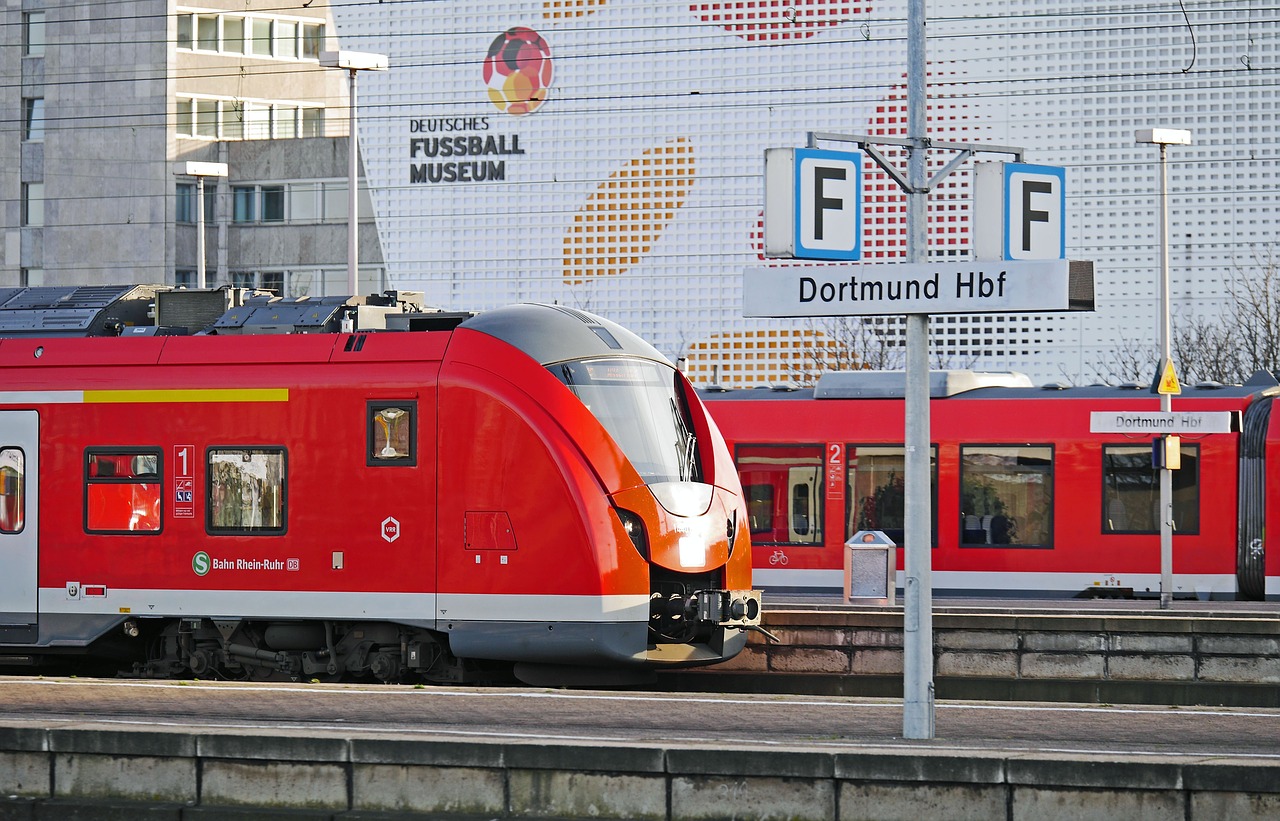
Spreading out / sleeping cars
If you have room (no one is looking for a seat) feel free to spread out. Just be polite. If the train begins to fill up, move your things out of the way.
If you are going to be on a train for several hours, splurge on a sleeper car. If you are traveling with others, chip in together. Having the extra room and comfort is well worth it. To offset some of the expense, bring your own food and drinks with you. Train food is expensive and it usually is not very good. You might consider freezing a bottle of water before the trip and let it thaw during the early part of the ride. By the time the water thaws, you have a fresh cold drink for the evening meal.
Train etiquette
Pay attention to the people around you. If they are speaking softly, then you speak softly too. Do not be the loud passenger, speaking too loud, laughing too loud, and being a jerk.
Do not put your feet on the seat across from you, even if you take your shoes off. If you have foot odor, do not take your shoes off on the train. Also, take care of your look, especially if you are using your holidays for hiking, climbing, or any other nature sport. Your shoes might be full of dirt, and it’s recommended to leave the train in the same way you’ve entered it.
If you are going to snack, eat quietly and use proper manners. No one wants to hear you smacking and slurping. Do not bring smelly food on the train. Tuna or egg salad is simply not a good idea.
The restroom will be small, but look around in other cars, there is probably a larger one for handicap passengers.
If you want to stretch out, just before nighttime, head for the observation deck with your (backpack) pillow and blanket. You will probably not be asked to move.
Here are a few things to take with you on your trip:
– Reading material (or puzzle books)
– Portable charger for your phone. These can be precharged and they will recharge your cell phone anywhere
– Motion sickness medications
– Wet wipes
– Write down any train changes and keep it in your pocket so you do not have to dig out your actual tickets
– Breath mints
AUTHOR BIO
Wendy Dessler
Wendy is a super-connector with Outreachmama who helps businesses find their audience online through outreach, partnerships, and networking. She frequently writes about the latest advancements in digital marketing and focuses her efforts on developing customized blogger outreach plans depending on the industry and competition.
Cover image by Hugh Lunnon
Travelling as an Introvert: Fostering My Personal Space For a Deeper Connection to the World
I’ve been wondering how has introversion hindered me from meeting people that could’ve had enriched my travel experience. After all, isn’t that one of the reasons I wanted to travel anyways? Should I’ve been more outgoing? Shouldn’t I have gotten home with prospect opportunities, tons of new emails and recollections of people I met on the road?
Let me contextualize
I’ve just finished the trip of a lifetime and now after 5 months, I’m back home.
I never was a person of many friends, I’m a loner and an introvert that enjoys planning parties more than attending them. Aloneness to me is freedom—aloneness, not isolation though.
When traveling there’s a natural inclination to gravitate to other travelers: we’re all in a foreign place with great stories to tell and valid opinions to share. Family and friends are back home and there’s a guy at your hostel with a similar adventurer spirit. Common ground, easy! So after 5 minutes of small talk, he wants to know what are you doing tomorrow, asks if he can join you and you say: “Sure.”
Well, a month had gone by into my trip when I lost the patience to hear rowdy backpacker’s stories about where they’ve been or where they were planning to go next. Honestly, I never cared about how many beers were drunk the night before, or their bias opinions about X country —mainly because they always tended to come up at the entrance of the epic monuments I always wanted to visit.
I just felt that the place I was deserved my full attention. After all, I spent years waiting for the opportunity to be there.
So I started to withdraw from people
Bearing in mind that we all have limited time to get to know a place when we’re on the road, I realized that I rather do it by myself without the distractions of casual chitchat, or the awkward moments of silence because it was my turn to say something back. I love silence, and I always preferred contemplation over a conversation.
The internal struggle
The thing is that I also envy the stories of travelers meeting someone that radically changed their travel plans, turned into a job opportunity overseas, or ended up as a lifelong friendship. The stories about being approached by a monk and talking for hours about life and god, or the ones about how fun it was bargaining at the market.
Why hasn’t that happened to me? Am I that disconnected or is it my body language? Where is this frustration coming from anyways? I hate bargaining, it makes me cringe—I rather use coupons, it’s more refined.
As an introvert, I wanted this trip to push me out of my comfort zone, to teach me about the world, and how I fit in it. So I came to understand that solitude it’s like my charging station and I need it daily, especially when I’m in a stimulating environment on the other side of the world.
Maybe I didn’t open myself more because I was never alone to begin with. I traveled with Nuno and we have a dynamic that works. We know each other and we tend to wander by ourselves for hours, only talking about it at the end of the day or during dinner.
I know I’m missing out on getting to know other travelers with which I could share tips and tricks on the best guesthouses, food stalls or transportation. And locals that could teach me more about their culture and cool unknown places to visit. But I don’t open myself easily.
Frankly, visiting most of the places on my own allowed me to be fully present in them. I could orient my focus to what spoke to me: I was aware of details, colors, lights, and smells. I now remember details perfectly and I do so because my mind wasn’t divided between where I was, and small talk with a new acquaintance. Isn’t that a sign of a fulfilled experience?
https://www.flickr.com/photos/planetgravy/28339748944/in/dateposted-public/
Now that I’m back home I’d like to take everybody I know to the places I’ve been. I want to share the food with my family, take my close friends to the most amazing viewpoints and swim with everybody in warm tropical waters.
Maybe I never felt the need to make new friends because I have good ones back home. Maybe I unconsciously realized that the opportunity I sought after was to do everything a second time with them by my side.
Then again, I don’t have that many friends anyway, so it would be quite a private excursion.
“Conversation enriches the understanding, but solitude is the school of genius”
– Edward Gibbon
The first month of traveling
So one month has passed and we’re currently in Vietnam writing our first thoughts about a whole month of travel.
We’ve been able to visit a bunch of different cities and countries which means: being constantly stimulated by everything those new places have to offer. Plus, the daunting notion of everything we planned to do in this trip, keeps burning in the back of our minds.
Long-term traveling requires a different mindset than the one we’re used to.
Unintentionally, we got caught in a rhythm like we were trying to fit everything on a 10-day vacation. Every day was filled 100% with as many activities as possible and all that was doing was stealing our presence and making us neglect our bodies. Not to mention that it was completely unfair to the places we were visiting. We needed to slow down.
Let us illustrate what might happen if you don’t slow down:
When you’re feeling physically exhausted but decide to keep going anyways for two more hours before having a rest, is when that new local market you’re in seems like every other you’ve seen so far.
When you decide to cram every Angkor temple in the same day even though there’s like 40ºC in the sun and you’re doing it by bicycle, is when you get ‘templed out’, dehydrated and over it.
When you decide to check those 20 iconic sites before breakfast, the fun experience of trying a new dish at that quirky local restaurant with not an English word in the menu is replaced by a BigMac at the first McDonalds you find “because you’re starting to feel woozy from the low blood sugar”.
When you’re drained, that characteristic street from Asia filled with thousands of motorbikes, honking cars, and busy locals will just annoy you and make you want to run to your hotel room. And when you get there, the irrelevant slow Wi-Fi connection can make you GO BONKERS!
The most obvious piece of advice you’ll ever hear
It’s important to know your body and your limits to begin with. No matter what part of the world you are, you’ll still need plenty of water, good food, and rest. BOOM. You’re welcome.
On another note
This whole experience has been quite positive and quite doable.
Crossing borders, new people, the amazing sunsets and white sand beaches, the swollen lips from too much chili, the days that blend together and feel like a giant Saturday, the unmeasurable freedom
We’re learning to relax more and enjoy each place we’re in. We’ve started to slow down, creating time to appreciate where we are and to be grateful for the privilege to be there.
The time we have in our hands actually allows for less structured days and the outcome is openness. Openness to change plans and make new ones as we go. To appreciate little things like the vibrancy of the flowers, the sweetness of the fruit and the smiles of locals passing by. Not only the breathtaking postcard-worthy scenery. It even grants the distance to look at the lives we have back home. Perspective.
We’re waking up feeling less tired and more inspired.
Long-term traveling is good and we definitely want more of it.
The sad smiles of Bangkok
After an eleven hour trip, we arrived at Bangkok’s Suvarnabhumi International Airport at 7:30 am and a scalding breeze welcomed us as we left the plane.
Nuno was afraid that they wouldn’t let us pass through the immigration port because we didn’t have a return flight. The process ended up being quite simple, some minutes in the queue, a smile from us, a photo and two stamps from them.
We were officially in Thailand! Kob khun krap!
Hopped on a train to the city center for 45THB in a 25min ride. The train is above ground which allowed us to see the city from afar. First the neighborhoods with terraced houses, separated by greens lakes, waterways and banana trees. Here and there the golden roofs of temples peaked from between the trees. As the city got closer, the train got fuller with quiet locals absorbed by their cell phones and sniffing on Vapex inhalers.
We left the train at the last stop (Phaya Thai) and started to feel the real city: traffic noises, new smells, thousands of locals in every direction and the unforgivable heat. We barely started walking and we were already sweating profusely. We got to Bangkok on a flight from Stockholm, so we were still wearing semi-winter clothes.
After some minutes walking, we entered the first building that seemed to have air-con. It was a mall filled with teenagers and a nice food court, an opportunity to freshen up and grab something to eat. We ate Tom Yum Noodle Soup.
With a full stomach, the journey to the hostel started. It was quite an adventure under the scalding sun.
We walked and walked, turning and rolling the map* on itself, asking the locals for help, but getting back a smile and Thai gibberish that didn’t help at all. Every kilometer made the bags feel heavier.
*You can get the city map on the airport at the Tourism Authority of Thailand for free.
As soon as we found the right street a Thai guy approached us asking where we came from, how many days we’ll spend in Bangkok, and to where we were heading. He told us that being a Friday, some monuments were totally free and the tuk-tuks with the yellow license plates were cheaper and would gladly take us there.
He also insisted a hundred times that we should go see the Big Standing Buddha.
We just want to get to our hostel man. Not now.
So here’s the deal: if you go to Bangkok you will get approached by tuk-tuks non-stop.
And if not by tuk-tuks, by guys working on commission for them, or for a store that makes money selling overpriced crap to tourist. Be prepared.
To them, anything works as an icebreaker:
– Hey ma’ friend. Where are you from?
– When did you arrived in Thailand?
– Nice beard. How long did it take to get it like that?
– Where are you going?
– When are you leaving Thailand?
– I’m a University teacher and I’m not trying to sell you anything, but…
– Need help ma’friend?
Days later a tuk-tuk guy, after we refused his ride, actually lied to us saying the temple we were considering visiting was closed that day. After insisting on trying anyways, he sent us in the wrong direction, following us until we got completely lost, trying then to make the sell. Not cool man, not cool.
And the funny part was that in the end, he just wanted to take us to the Big Standing Buddha.
All of this persecution will make you feel like a Big Dumb Standing Tourist.
Bangkok is a worn down, full of life, hectic city.
A reflection of that is the famous Kao San Road, a place for the ones who like to party. Neon lights, hundreds of tourists, street shops, vodka buckets and loud music from the bars constantly competing with each other.
Parallel to Kao San is the mellow and bohemian Rambuttri Road. Good music, plenty of street food, fruit sellers, cool restaurants, nice bars, lighted trees, and plenty of Thai massage spots. It’s a great place to have dinner and spend your evening.
Definitely worth a visit.
Thailand is renowned for it’s cheap and delicious street food. It’s everywhere at any time of day. You can have a delicious pad thai from 50 to 80 THB.
There are plenty of iced sliced fruit to eat for 20 THB. Sweet mango, papaya, dragon fruit, watermelon and pineapples, all peeled off and sliced, laying in huge amounts of crushed ice.
You should also try the egg and banana pancakes, the coconut water, and all the fruit juices at hand.
You’ll also feel the need to drink insane amounts of water. We went to Thailand in March and the heat was intense! Fortunately, water was everywhere, you can buy them at any 7 Eleven scattered all over Bangkok. A big water is only 13THB, the same price we buy them in Portugal, plus, you can buy them cold. It’s also a good excuse to break your 500 or 1000THB bills.
Talking about money, there are ATM machines available everywhere, so no need to worry. But they’ll all charge you a 200THB fee for every withdrawal. To that, don’t forget to add your own bank’s fee.
I believe we’ve all heard about the famous Thai sympathy. Locals do have a constant gentle smile on their faces, especially to foreigners, but they’re also quite reserved. This narrowed our interactions to vendors and merchants, and according to our experience, they’ll drop the smile as soon as you drop the money.
Maybe you’ll get a robotic ‘Bye’ at the end.
But maybe that’s just in Bangkok.
By the way, we ended up finding the Big Standing Buddha by ourselves.
Couldn’t understand what was the fuss all about.
Bangkok travel expenses (daily average for 1 person)
Meals: 1,96€
Water: 0,27€
Hotel: 5,50€ (Private double room)
Subway from Suvarnabhumi Airport to city center: 1,00€
Tuk-tuk to Chatuchak market: 2,60€
Site’s entrance fees: 6,39€
If you have any questions or some extra info everybody can benefit from, please leave it down in the comments! We’d love to hear from you.
